Why create from scratch when you can repurpose? Transform that old blog post into an Instagram Reel, a punchy Twitter thread, or a sleek infographic. By reshaping your social media content, you’ll boost engagement, save time, and supercharge your social media strategy.
Content repurposing is the cheat code to smarter social media marketing. It extends your content’s lifespan, reaches new audiences, and keeps your brand consistent.
Below, you'll discover 8 effective ways in which you can take advantage of content repurposing and skyrocket your brand.
Table of contents
What is content repurposing?
Why is repurposing content a great idea for successful marketing?
8 strategies to repurpose content effectively
What is content repurposing?
Content repurposing implies using a piece of content created (regardless of the type) as a base for a new content format covering the same topic.
Take, as an example, turning a blog post into an infographic or social post; a white paper turned into a video series or podcast episodes, and many other opportunities.
Why is repurposing content a great idea for successful marketing?
Reusing existing content isn’t just practical – it’s your B2B social media marketing superpower.
The benefits of repurposing content are countless, but to name a few – it helps you save time, stretch your resources, and connect with a broader audience without reinventing the wheel.
Faster content creation
Starting from scratch every time is exhausting, and repurposing content lets you skip that step. You can take something you’ve already created – like a blog post – and turn it into a video, podcast, or a set of social media posts.
Once you figure out your content repurposing workflow, you start to work smarter, not harder. You can keep delivering fresh, valuable content without burning out.
Cost-effectiveness
Why spend extra time and money creating something entirely new when you can reuse content by refreshing what’s already working?
Through the magic of repurposing, a single webinar can be repackaged into bite-sized blog posts, engaging social clips, or even a downloadable guide, with a lesser creation cost.
Enhanced reach
Not everyone consumes content the same way hence having so many social media platforms and formats makes sense. Blog articles, Instagram carousels, LinkedIn quotes, YouTube Shorts – you name it, and all of these are needed for your online presence.
Let's meet your audience where they are! Content repurposing allows for adapting your message for all platforms and formats. This way, you expand your reach and make sure no one misses out on your insights.
Engages different learning styles
We all have our favorite ways of learning. Some watch, some listen, some read, but most of us do a little bit of all. Reusing existing content helps you tap into those preferences.
You can take one idea and turn it into a visual infographic, an engaging video, or an in-depth article. Different ways to repurpose content keep your content more accessible to everyone.
At its core, a decent content repurposing strategy helps your audience get exactly what they need in a way they’ll love.
8 strategies to repurpose content effectively
#1. Repurposing blog content
Your blog is a goldmine for new content units. Repurposing blog content allows you to amplify its impact and reach new audiences across different formats and platforms.
Reimagine your existing articles – provide value in fresh ways and connect with readers, viewers, and listeners alike.
Below are some practical repurposing examples to get started.
Turn blogs into videos
It’s always a great idea to repurpose blog content into engaging videos, both long and short.
You can take a detailed blog post like organic vs. paid social media and create a short Instagram Reel out of it. Videos, especially Reels are great for driving traffic to your blog.
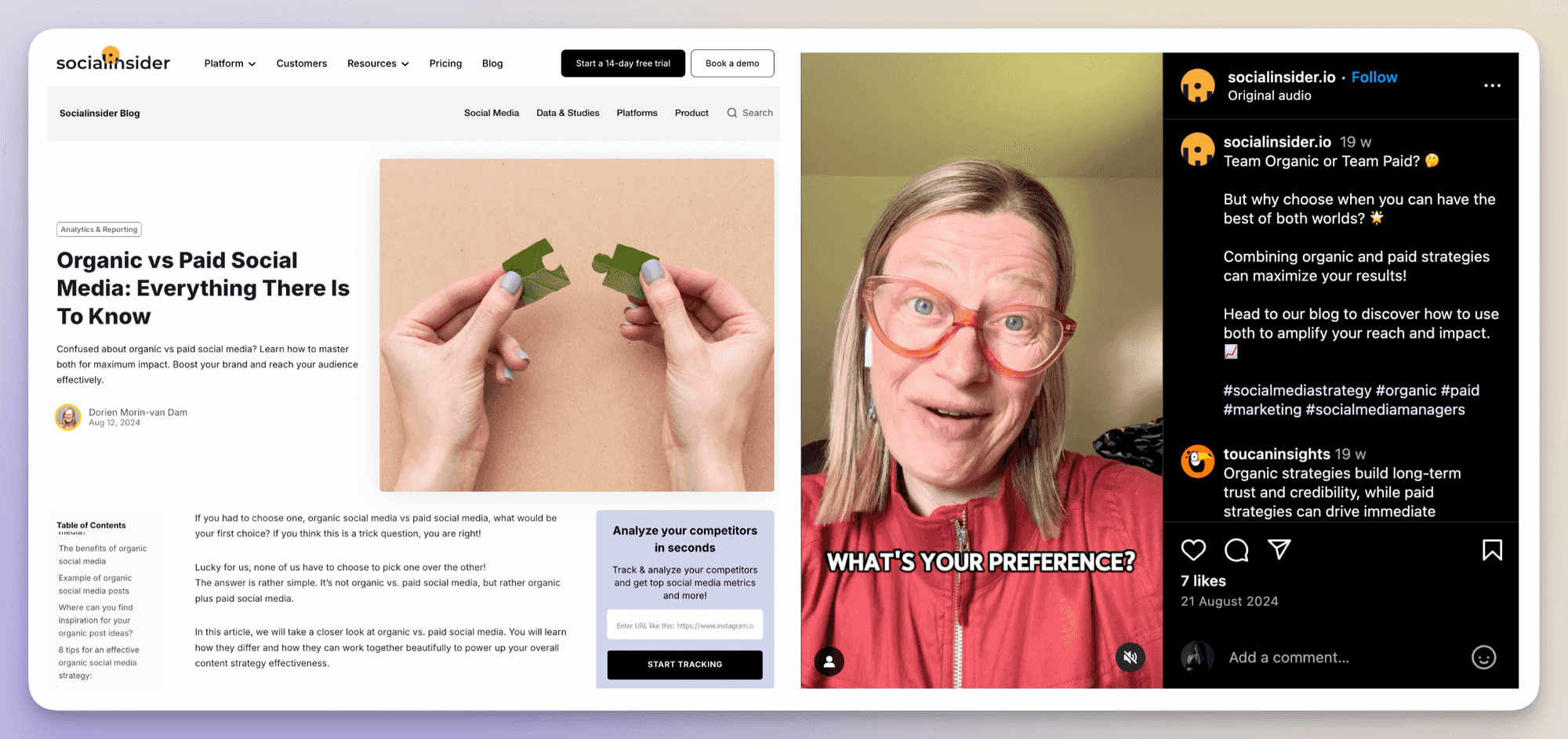
Create social media posts
Another great way of content repurposing is to break down blog content into bite-sized insights for social media. For instance, content from our article related to TikTok influencer marketing was repurposed into an engaging LinkedIn post.
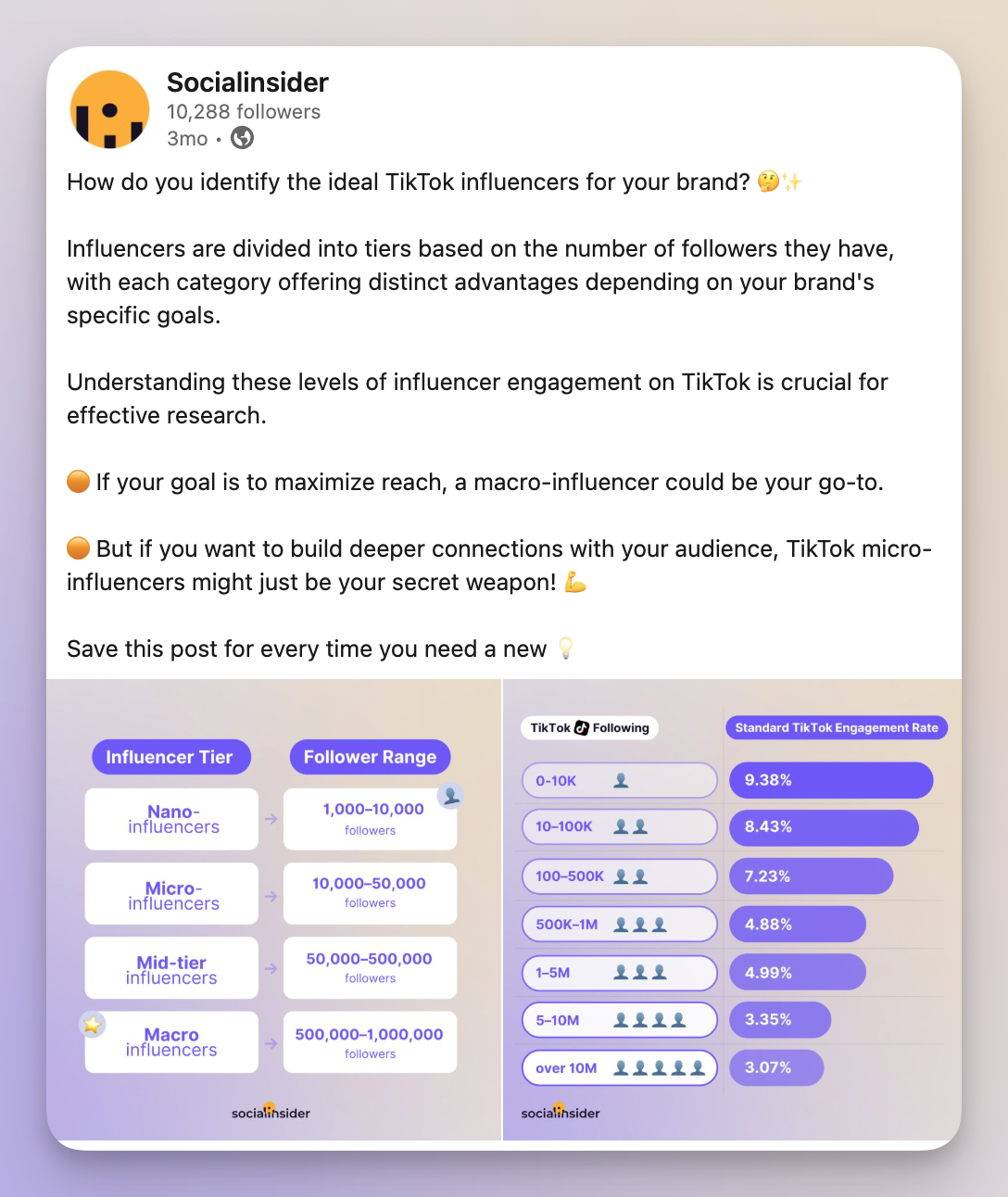
Summarize into infographics
Visual learners love infographics, and it always adds up to the credibility of whatever you have to say online. Take your existing content and condense its key points into a visually appealing graphic, like the infographic we created based on an article related to social media personas.
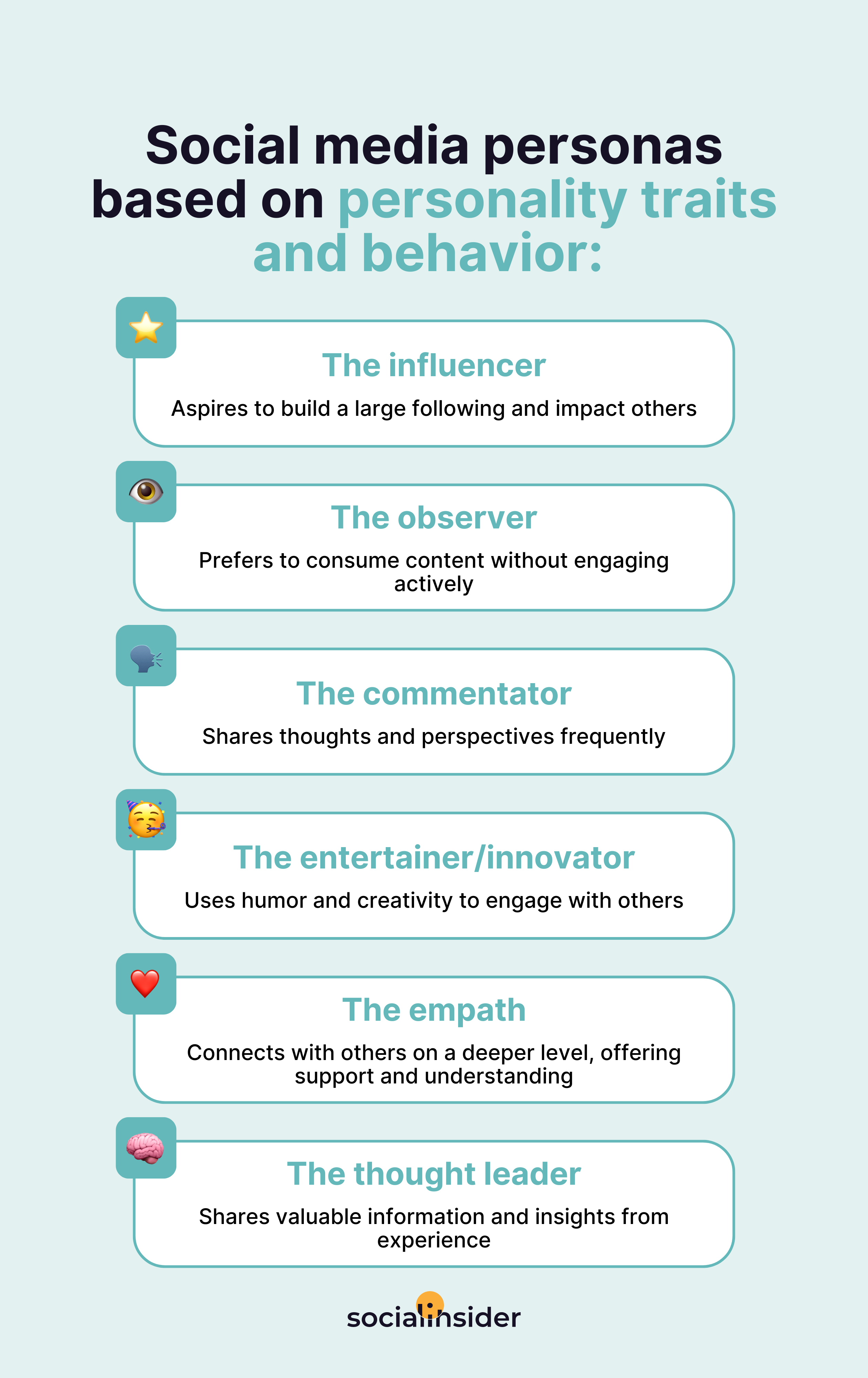
This format of repurposing blog content is perfect for sharing on Pinterest, Instagram, and LinkedIn – and we love our content being shareable.
Transfer knowledge into a newsletter
Reuse blog content and make a concise, actionable newsletter out of it. If your blog posts have actual tips on what to do and how to do that, you should let your subscribers know about it.
For example, our insights from the blog on Thanksgiving social media post ideas were repurposed into an email that highlighted quick tips for subscribers – look through your recent (or not so recent, yet relevant) articles and see what you can do.
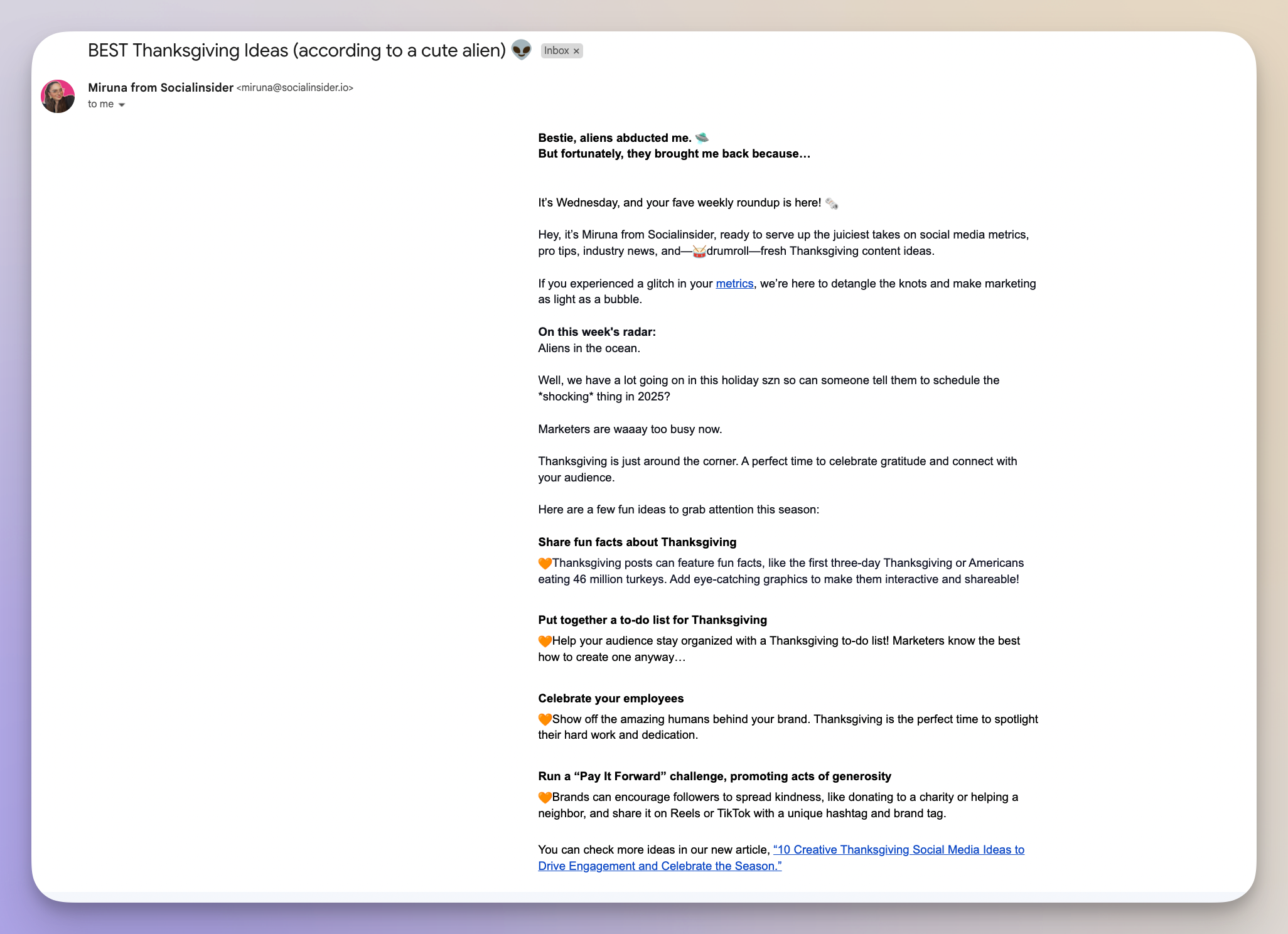
Create a Live event
Why not host a whole live event to discuss the insights from your blog? Even if your audience has already read the article, you can repurpose your content to further expand the ideas you’ve been writing about. This would best appeal to auditory learners.
For example, our blog post on social media strategy inspired a live session in Socialinsider’s Facebook community, as seen in this Instagram post – here’s how to repurpose blog content for social media (3 different ones, actually). Besides, live events are excellent for audience engagement and real-time interaction.
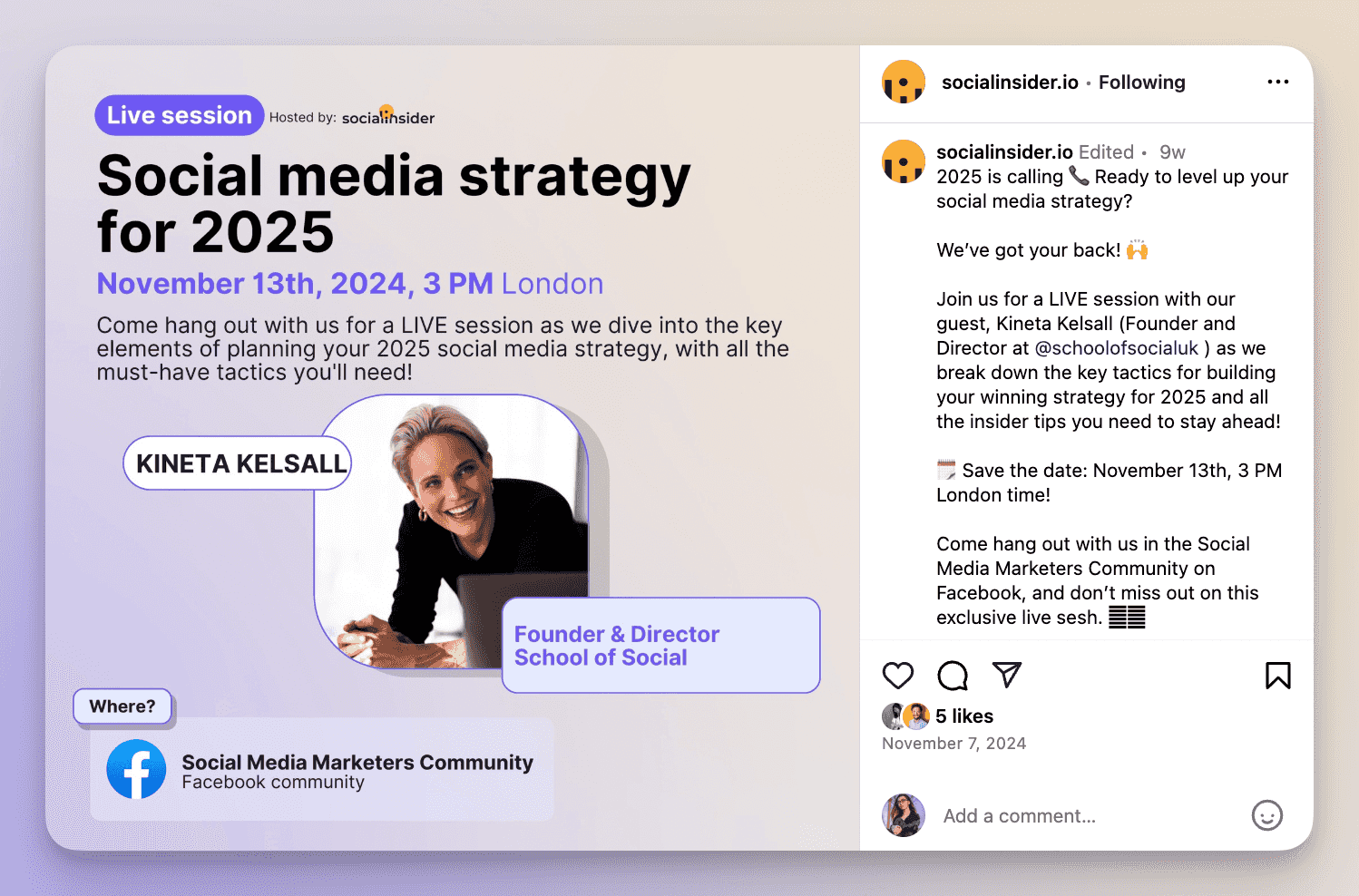
Design templates
Give your audience a practical takeaway by creating templates from your article's info. Let's take as an example our blog post related to social media audits, for which we created a downloadable template, for it to be easy to reuse by our readers.
This way, we helped our audience conduct their own audits more easily.
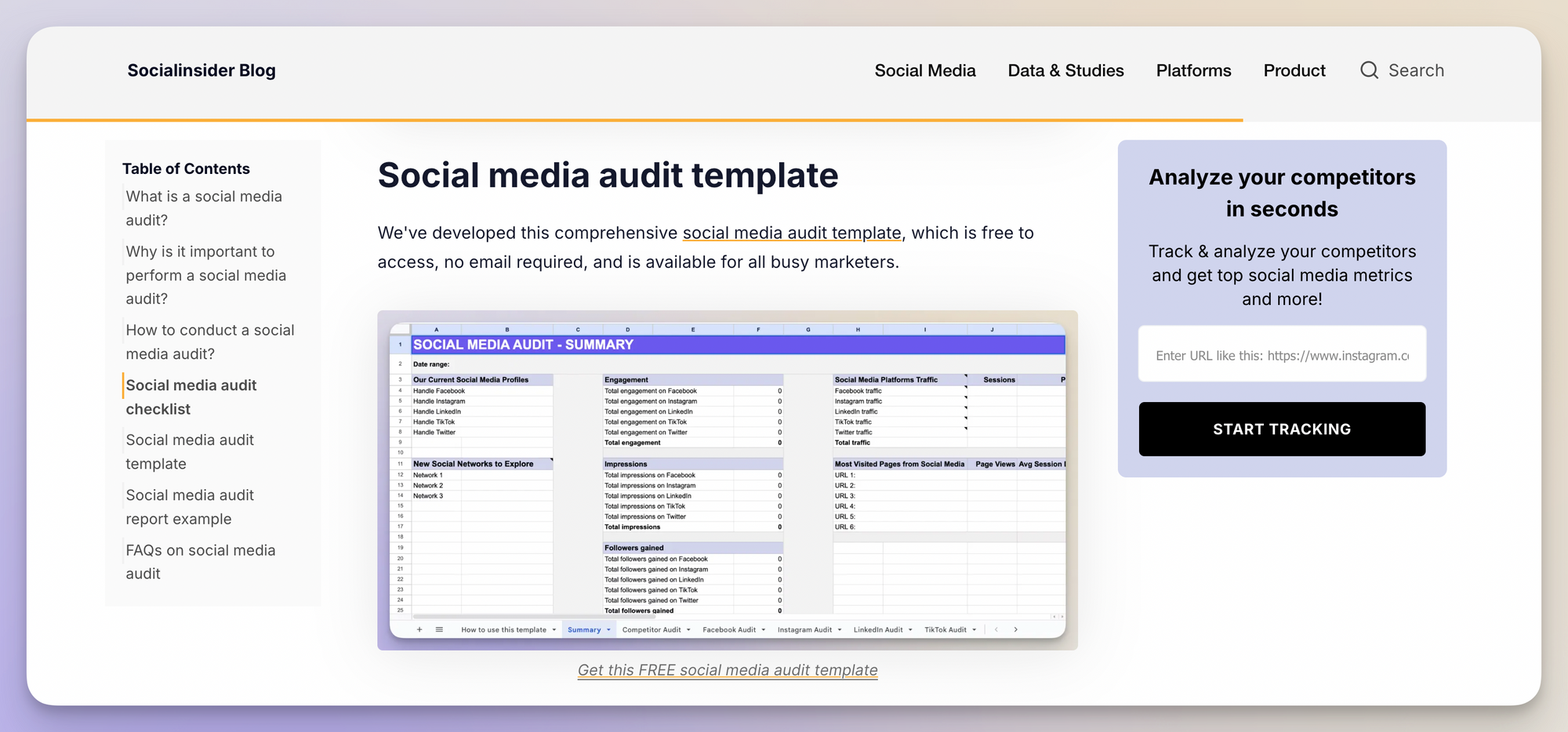
Share as Stories
One of the easiest ways of content repurposing is turning your blog content into Stories for Instagram or Facebook. Here's how the launch of our newest feature and webpage for social media content analysis was reimagined as Instagram Stories showcasing the latest tool from Socialinsider.
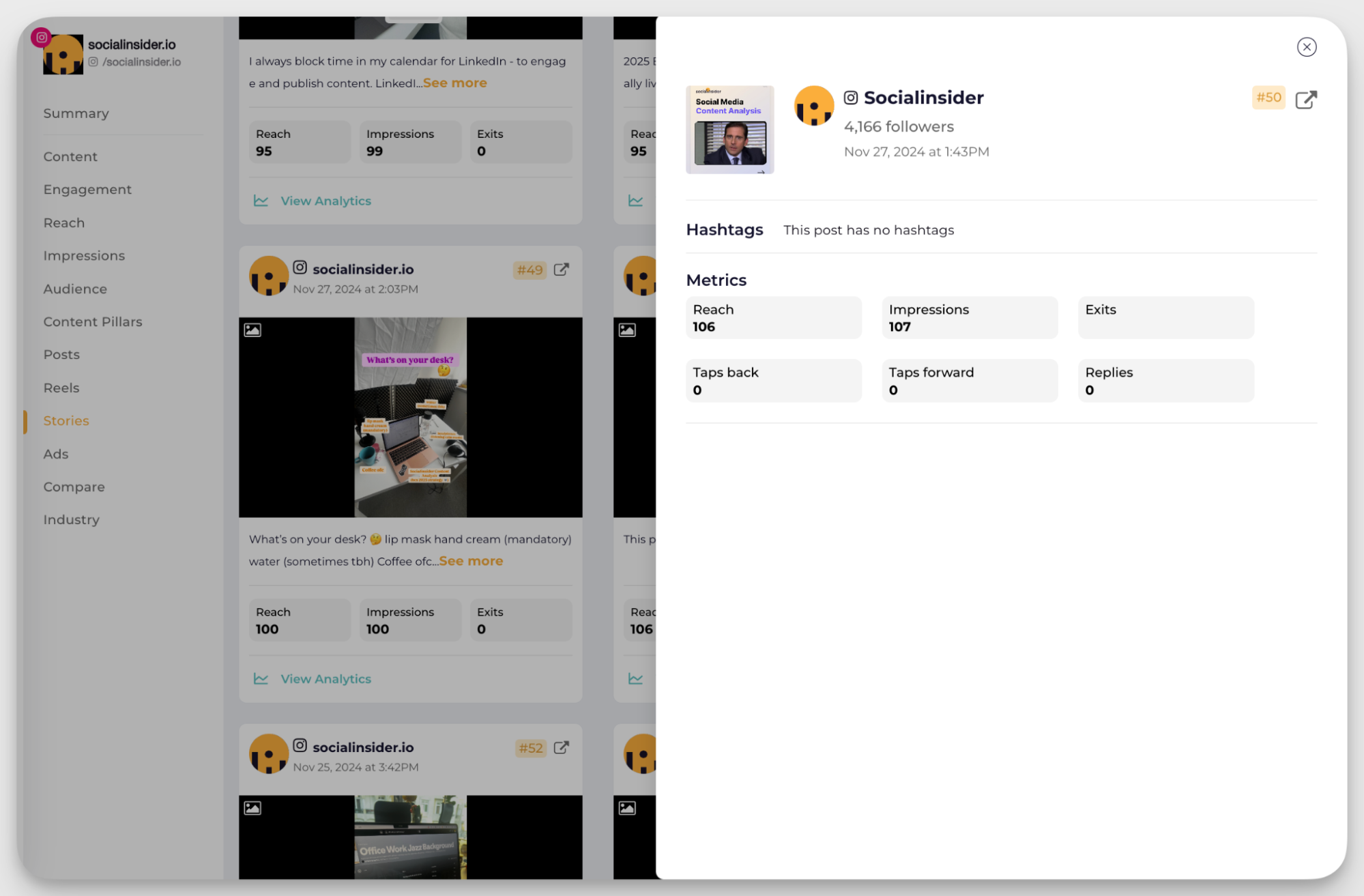
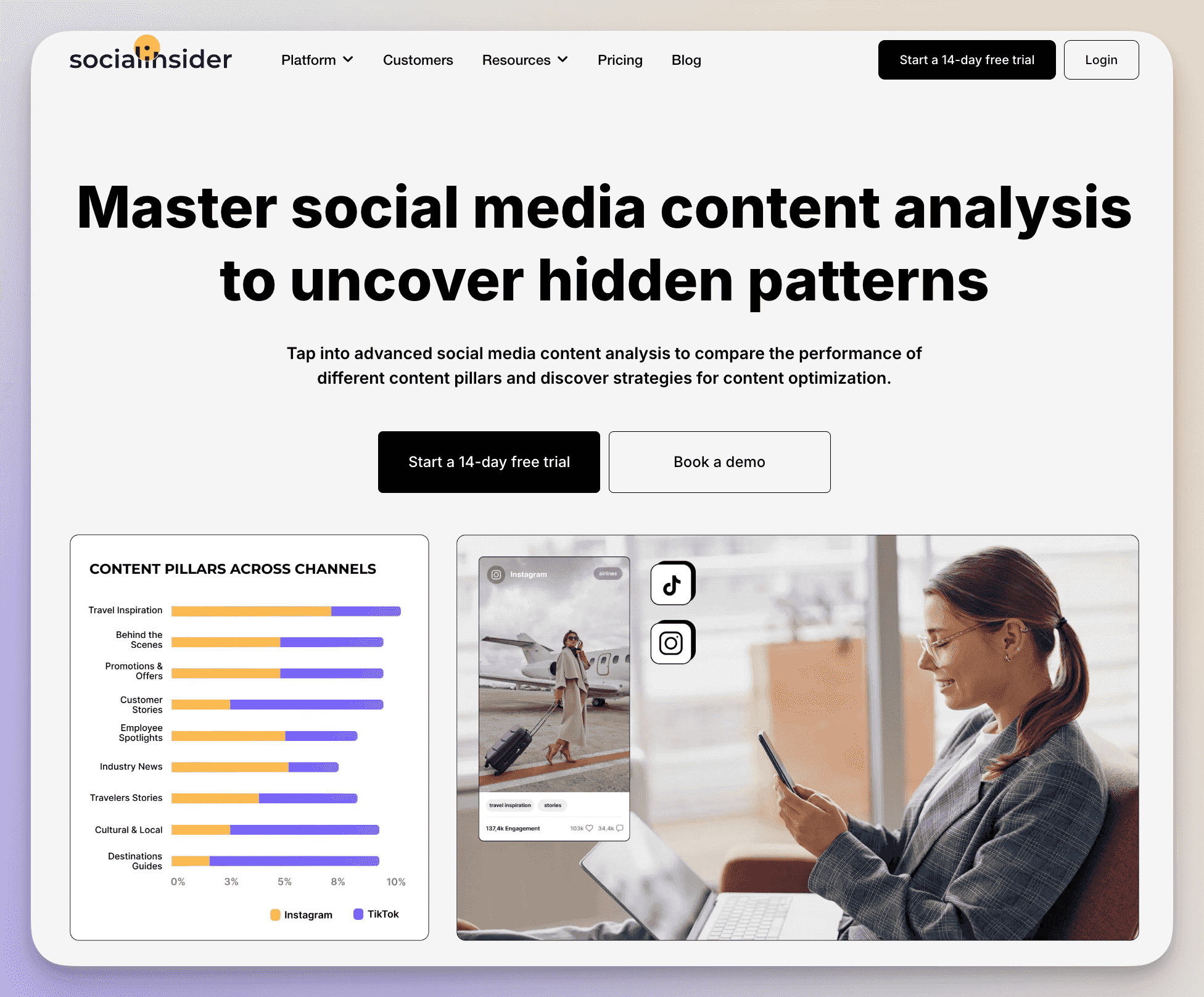
Create Ebooks
The information you share in your blog posts is structured and practical, so why not compile multiple blog posts into a whole ebook? That way, you are repurposing your divided content into a large comprehensive resource.
Ahrefs marketers frequently repurpose video content into ebooks like this one on SEO, providing in-depth knowledge in a downloadable (and, in case of Ahrefs, even paper) format.
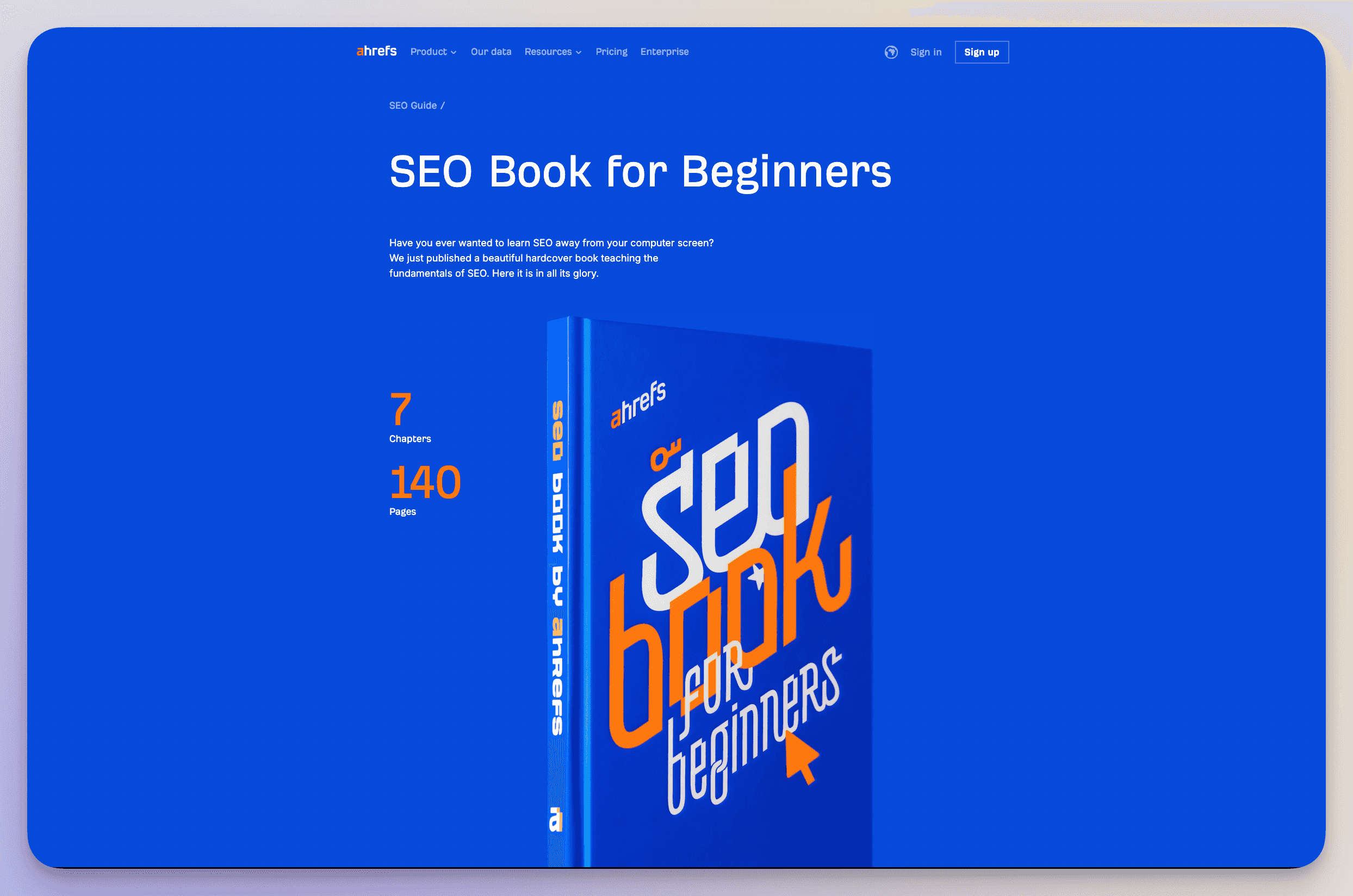
Develop a video course
Take your expertise further by creating a video course based on your blog content.
Ahrefs’ SEO Academy is a perfect example of repurposing content from their educational blogs into full-fledged courses on all things SEO. For a lot of people, it’s an easier way to learn compared to reading.

Extract thought leadership quotes
Reuse content by providing key insights or quotes from your blog – this positions you as a thought leader.
For example, this Instagram post featuring a quote from Hubspot Academy demonstrates how to repurpose your ideas without the need to generate new ones.
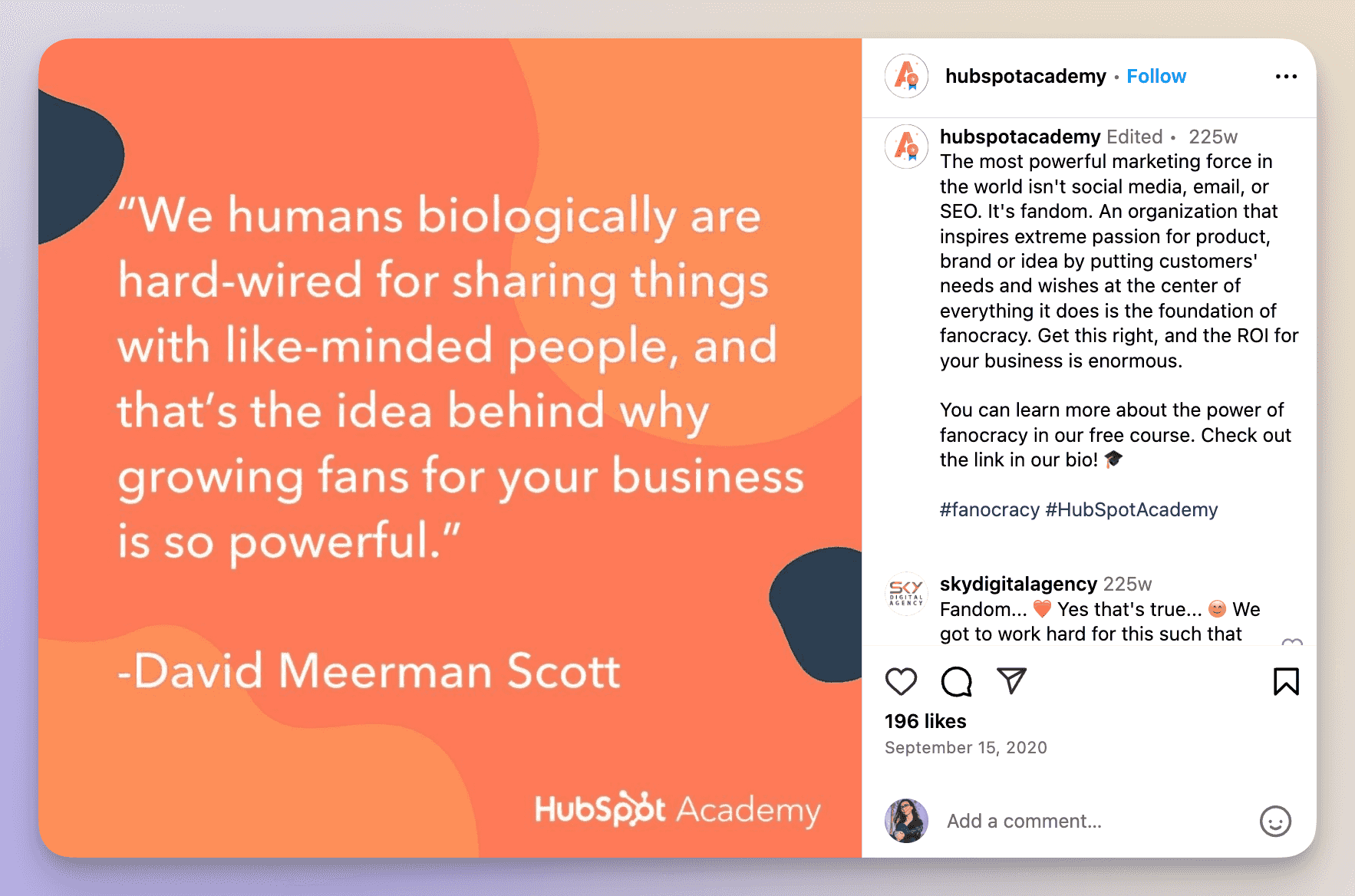
By repurposing blog content into various formats, you can breathe new life into your existing concepts, reach a broader audience, and maximize the value of every piece you create – especially when it comes to your blog articles.
#2. Repurpose social media content
Social media content should be included in your repurposing content strategies.
Your most engaging posts can be transformed into entirely new formats, helping you extend the life of your ideas.
Just take your best social media posts and give them a fresh spin!
Below are some ways to repurpose this content – adapt it for new audiences or recreate it for your existing followers.
Expand social media posts into blog articles
Social posts often spark ideas that deserve more depth. You should use your existing content on Instagram or LinkedIn as a foundation for a blog article – your social media posts can be a great source of inspiration.
Instead of trimming content for social media, let’s flip the script – take a quick caption or idea and turn it into a full article.
Focus on timely topics adding real-time marketing to your content repurposing strategy, capitalize on sudden changes in the market, and be even more relevant engaging with your audience on things that happen here and now.

You can write a post about a new industry trend or your reaction to a breaking news story and repurpose it into a detailed blog post.
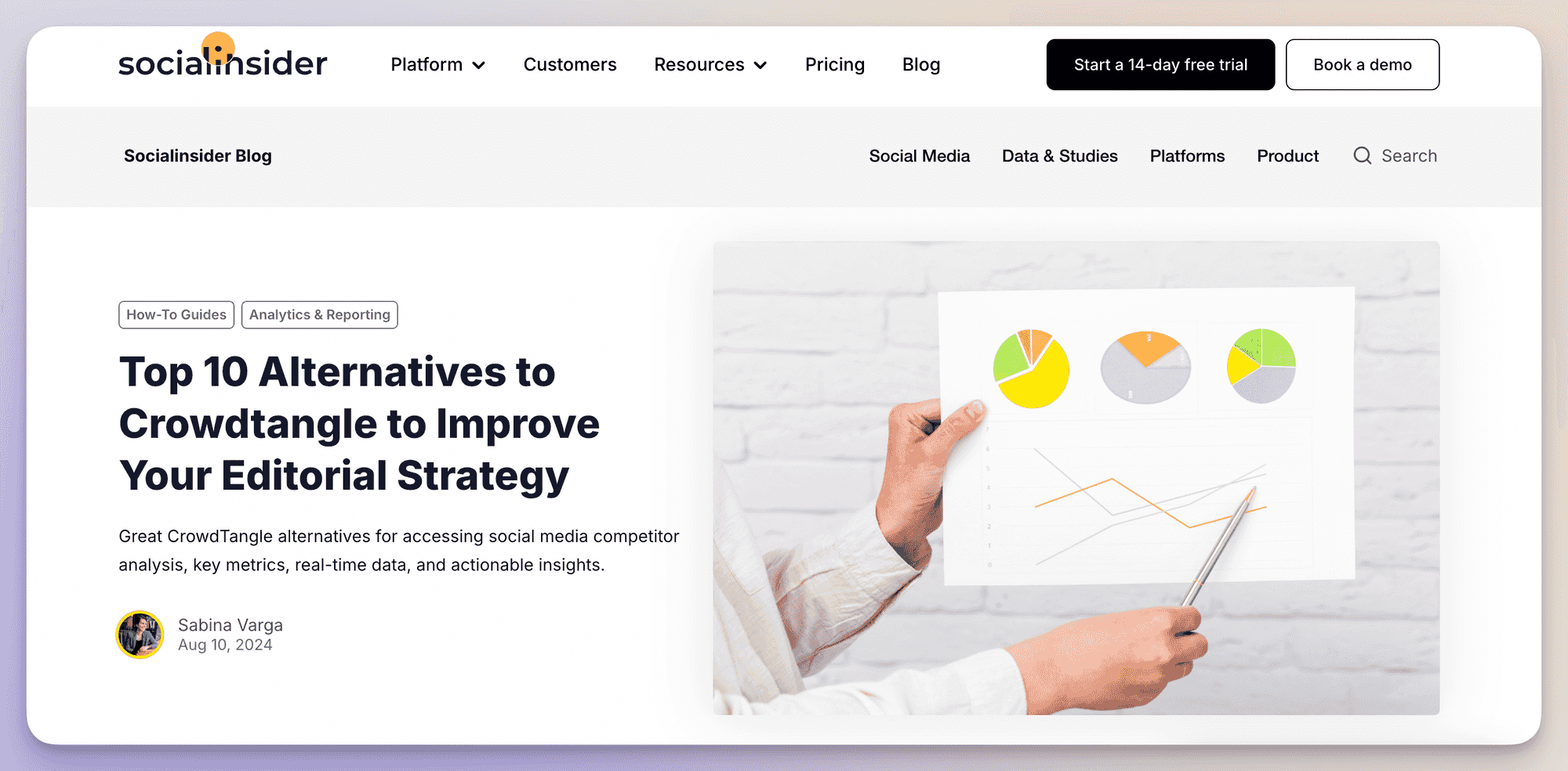
Add research, case studies, and practical tips to prove that you’re following the latest updates in the industry.
This approach to content repurposing lets you dive deeper into subjects you’ve already touched upon and give people more applicable insights while avoiding the need to constantly come up with new concepts.
Your industry will give you ideas; you just need to act quickly.
Extract podcast subjects or questions
Don’t great podcast topics in many cases originate in your social media conversations? Questions, polls, or even heated debates in your comment section can provide excellent material for repurposing content for social media.
If your followers ask for tips on improving engagement, you can turn that into a detailed discussion in your next podcast episode.
Adapt content for different platforms
Not all platforms are created equal, and neither are their audiences. You should repurpose content for social media platforms to match the strengths of each.
Why not repurpose video content you have? Start off by editing a YouTube tutorial into short, snappy TikTok videos or Reels – like Monday.com did with their new Project Portfolio Management feature. They dive deeper on how to utilize the feature on YouTube and shortly present the updates on Instagram.
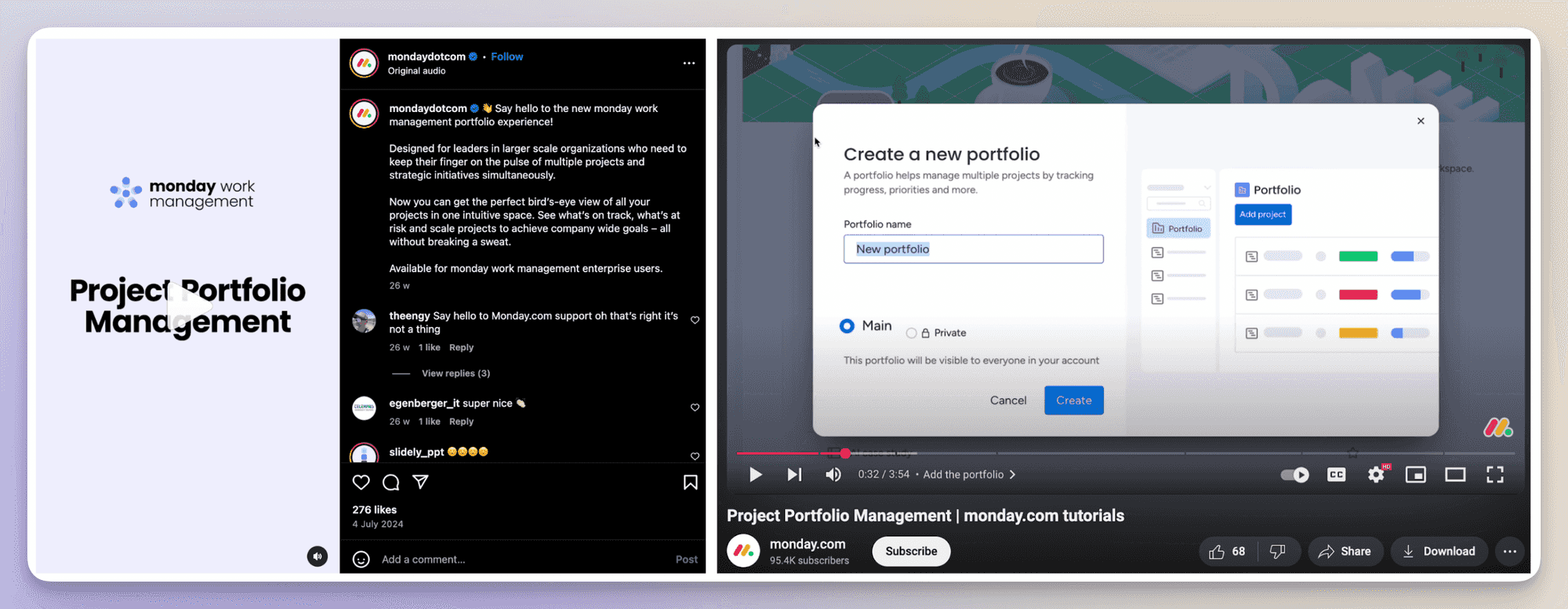
Compile and curate roundup posts
Compiling roundup posts is a fantastic way to extend the life of your top-performing social media content.
By bringing together existing content, like your best tips, insights, or products in one place, you provide your audience with a cohesive and valuable resource, and maximize the impact of content that you are sure already resonates; with Socialinsider, you can actually be sure here.
- To create a content repurposing workflow, you need proper analysis. Log in and head to the analytics dashboard to review social media metrics like impressions, engagement rates, and shares, after adding the social media account you want to learn about.
You can analyze a brand across all social media platforms, but we’ll be analyzing Instagram here.
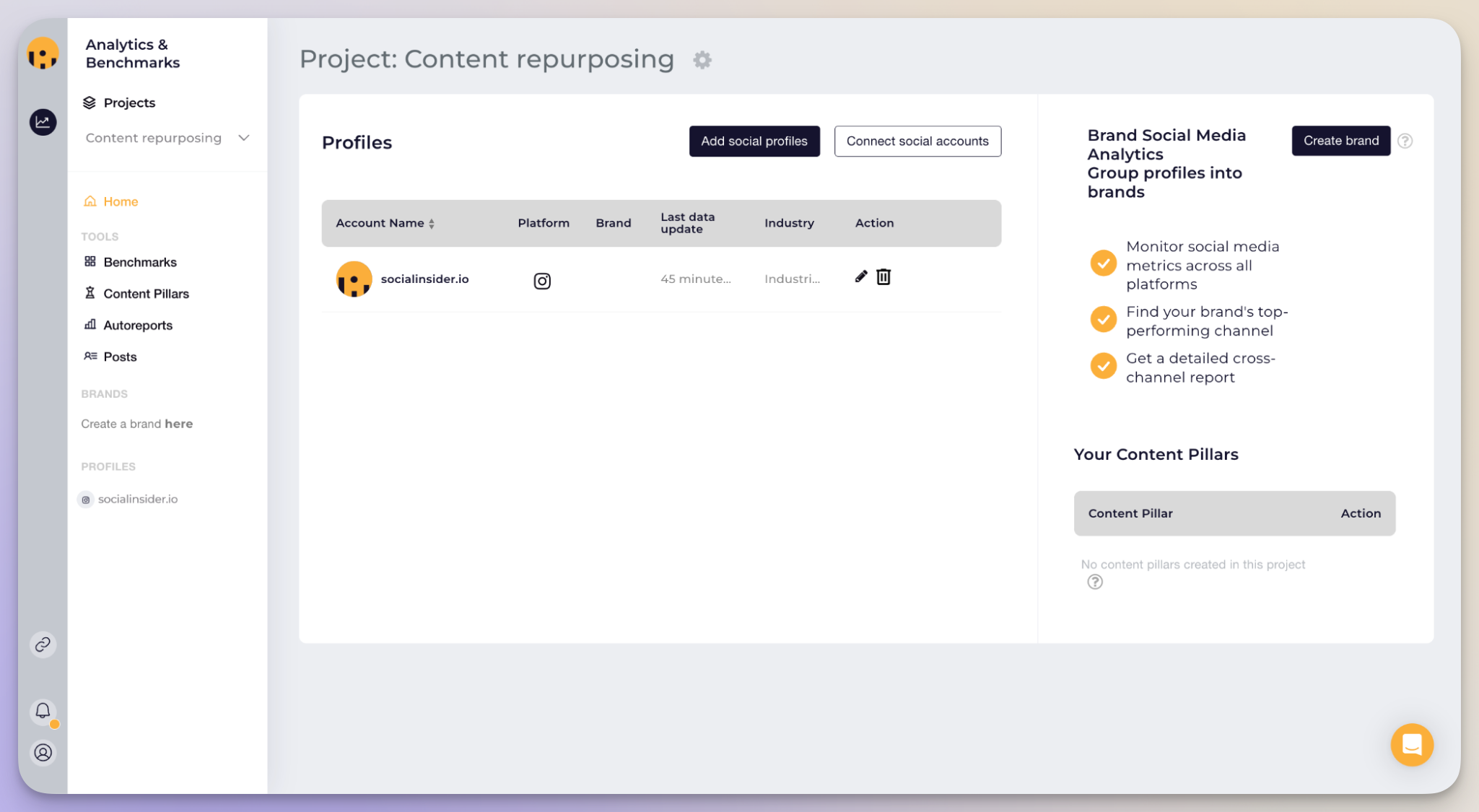
- Filter your existing content to narrow down posts by date range or specific metrics like highest engagement rate or impressions.
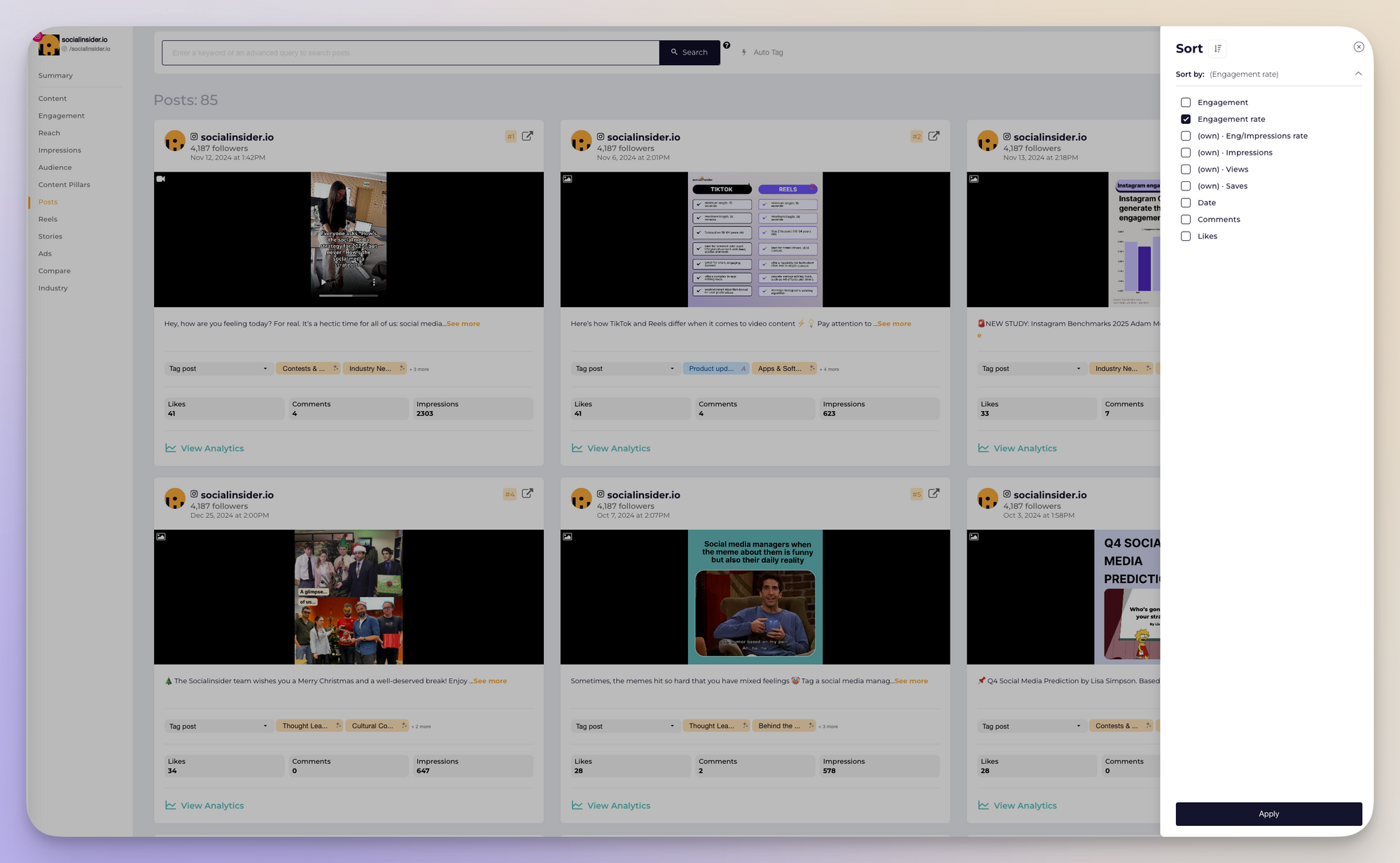
- Look for common themes or topics among your top-performing posts – you might notice that some posts or topics consistently get the most traction. You can also download the data to further analyze it.
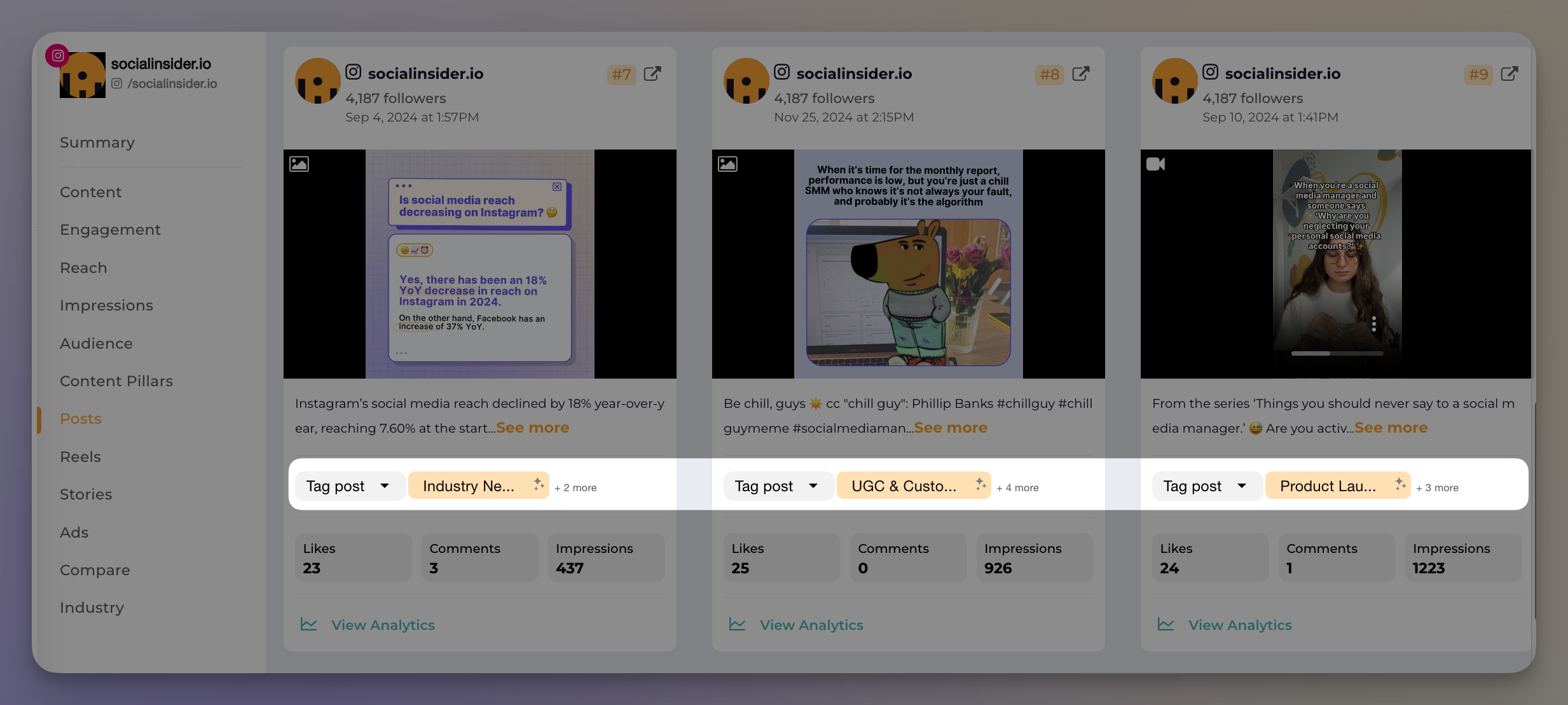
Repurpose your content based on the insights – curate the best-performing posts into a themed roundup.
If several posts focus on industry tips, some of the repurposing examples would be a “Top 10 Social Media Tips” article, a carousel post, or an email series.
When creating your roundup, enhance the content with additional context, commentary, or visuals to make it feel fresh and engaging.
With these social media insights, you know your repurposed content is data-driven and focused on what your audience values most.
Recycle evergreen content
Your evergreen content can greatly benefit from a repurposing effort. Pull up older posts that consistently perform well and align them with current trends, new data, or seasonal events.
For example, reusing content about building brand awareness can be tweaked to include strategies tailored to emerging platforms like Threads.
Post user-generated content
Your community is your best ambassador. Reuse content like photos, reviews, and testimonials and put them into posts – not only does it help get ideas, but also makes people comment, especially if it’s their review, picture, or video.
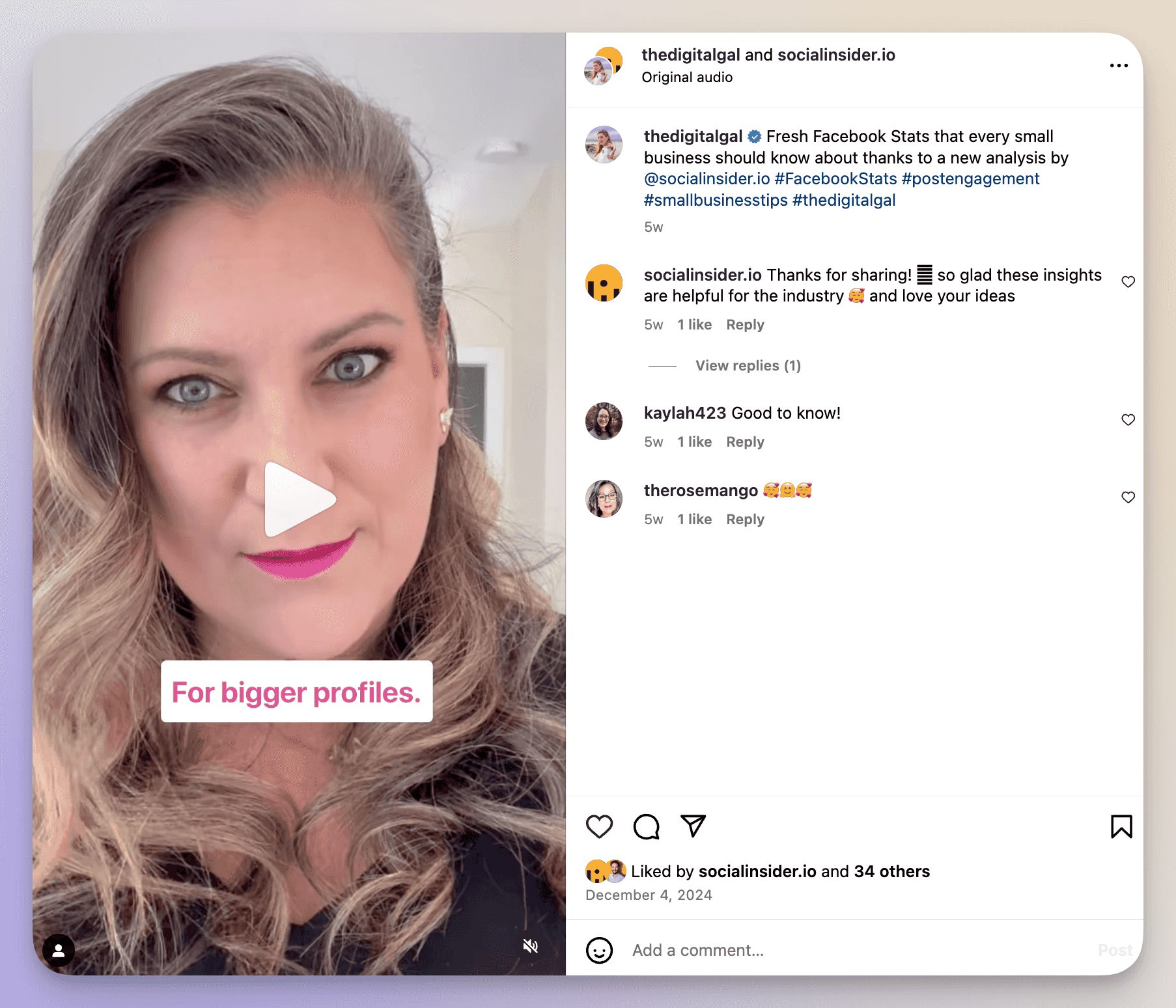
You can also highlight customer success stories – reuse content to create collages and videos that celebrate your audience, combining multiple user contributions into one cohesive piece.
Turn comments into social media posts
As we talked before, good ideas for repurposing content for social media often come from your audience and their engagement. Turn their comments and questions into content, be that a quick Q&A post, a myth-busting series, or an infographic.
If your follower’s comment asks for step-by-step guidance, it could inspire repurposing it into a detailed tutorial post or even a live session.
Use analytics for effective repurposing
Data never lies – social media analytics alone can guide you toward content repurposing findings that are worth it.
Use tools to identify posts that outperformed your expectations to reuse content you discovered for new platforms or formats.
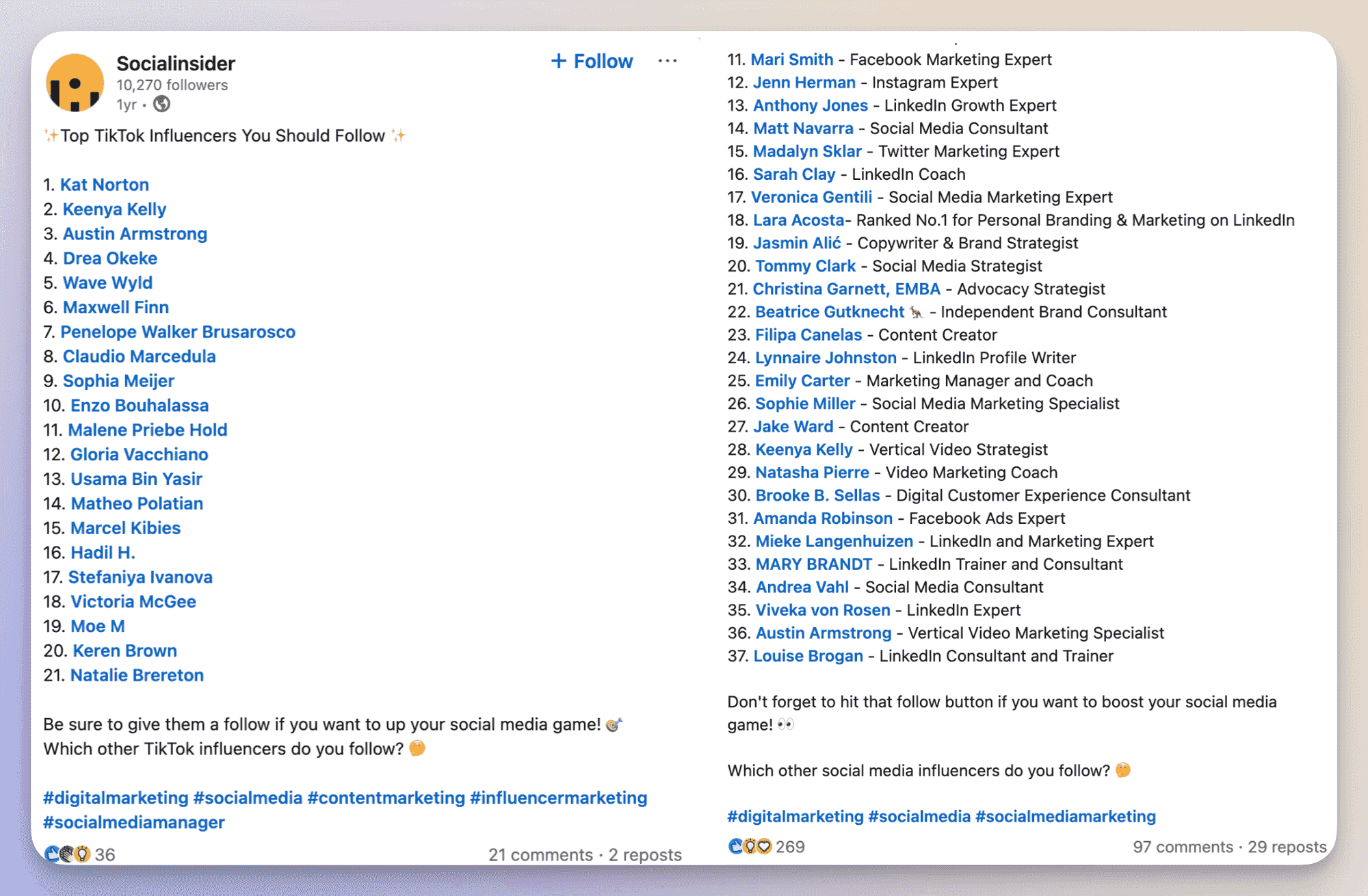
For example, in our case, a LinkedIn post that reached 243 impressions in 2023 was updated in 2024 and skyrocketed to 36K impressions. It’s not just reposted; it’s updated, too.

#3. Repurpose video content
Video content is one of the most adaptable assets in your content library for repurposing.
With a bit of creativity, a single video from your existing content can be reshaped and reused in various formats, yet staying relevant and continuing to provide value long after its original release.
If you feel that struggle with original video ideas, check out 30 video marketing ideas to help you get started before repurposing.
Trim videos into short clips
Short-form content is the best for TikTok, Instagram, and YouTube Shorts.
To repurpose video content in short formats, pull out the most compelling moments from your longer video (be that a thought-provoking quote, an eye-catching scene, a tip, or just a fun moment) and turn them into standalone clips repurposed and optimized for these platforms.
You can trim your YouTube tutorial repurposing it into multiple bite-sized content units, like in the example below. The Reel focuses on a single feature of email trafficking, while the YouTube video describes the whole process of mass emailing.
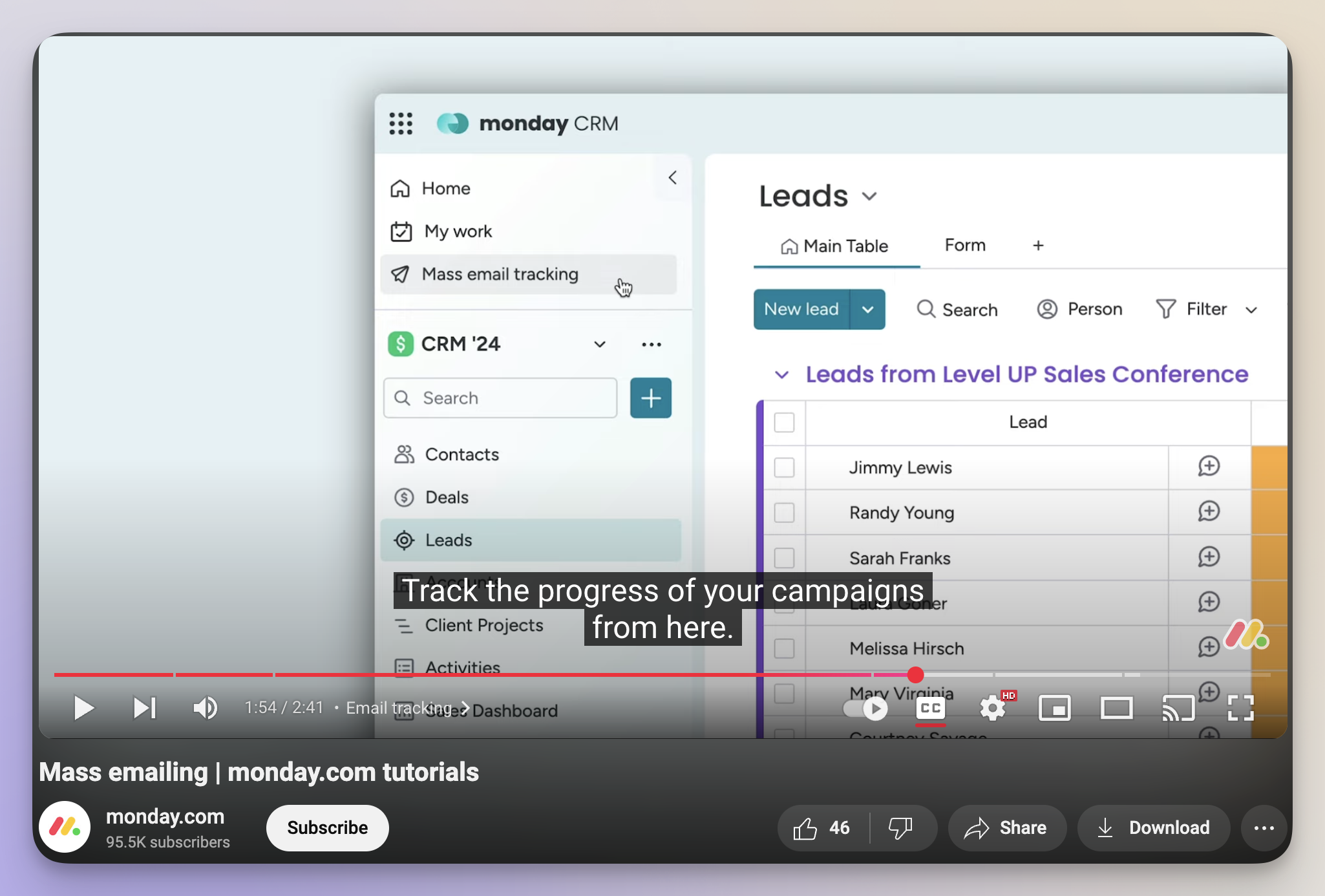
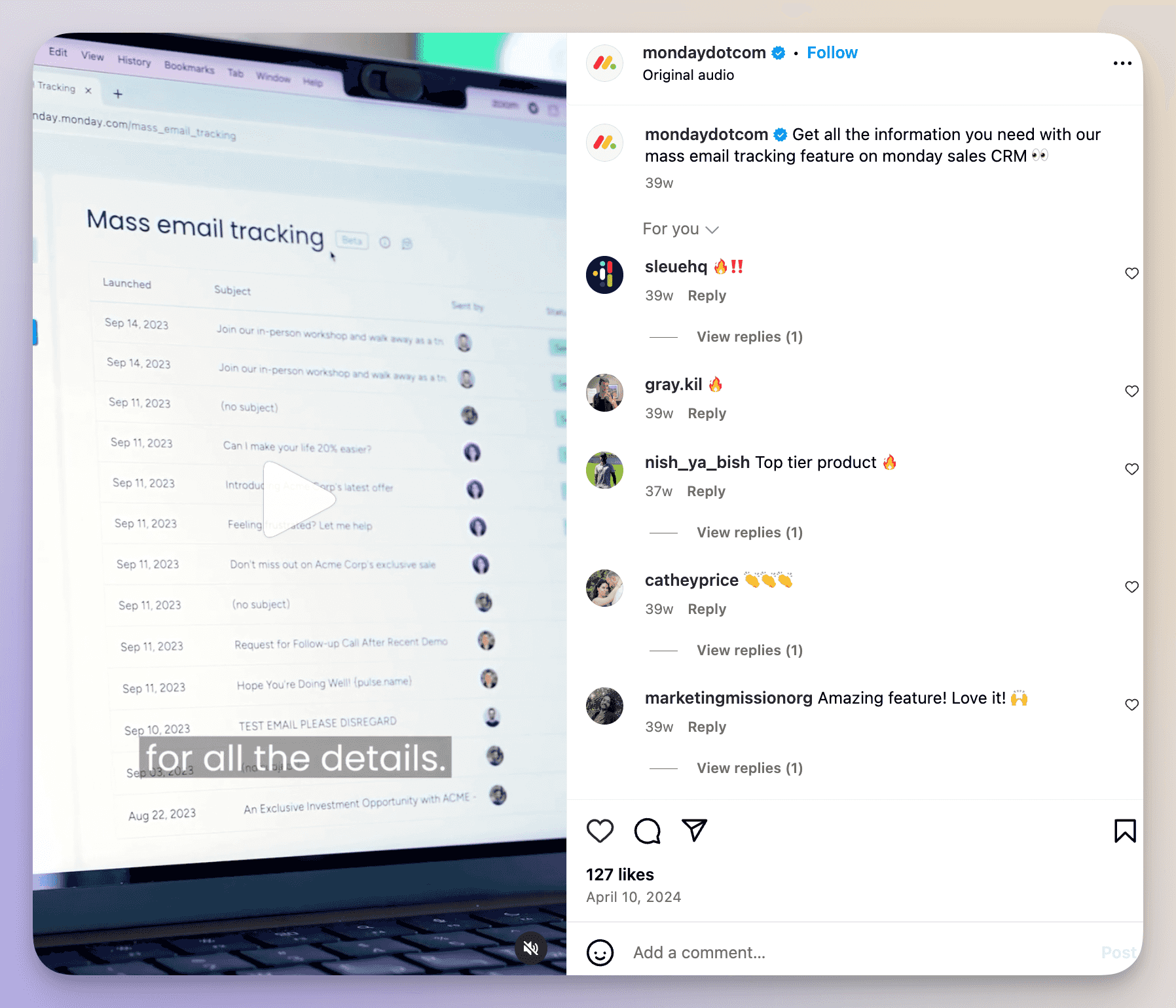
Leverage text summaries
Got a video packed with insights? Repurpose content from your recording and turn it into a blog post, LinkedIn article, or even a newsletter.
Break down the main ideas, summarize the key points, and add context to make it a resource for audiences who prefer written content. Your readers who don’t really watch a lot of content will appreciate it.
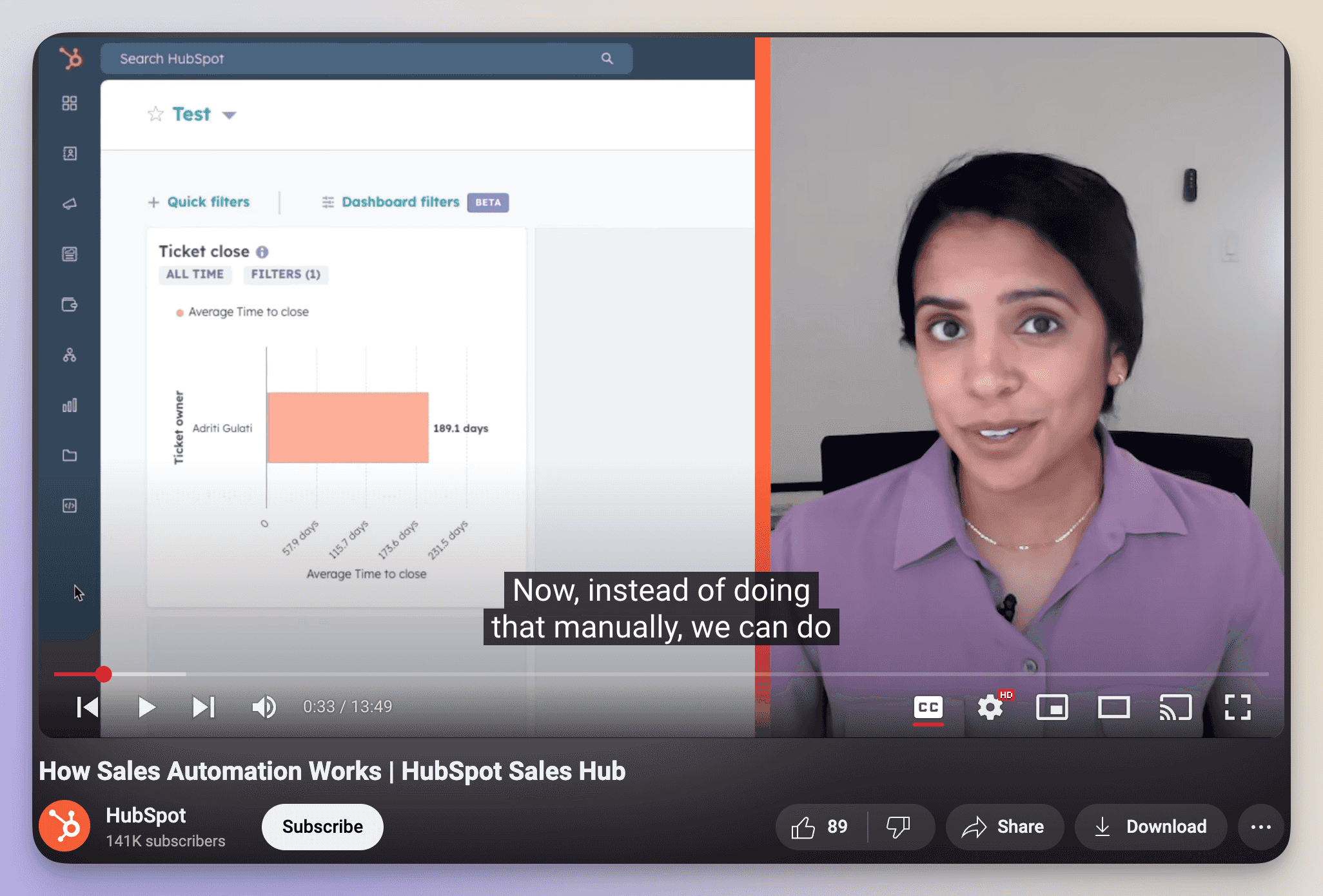
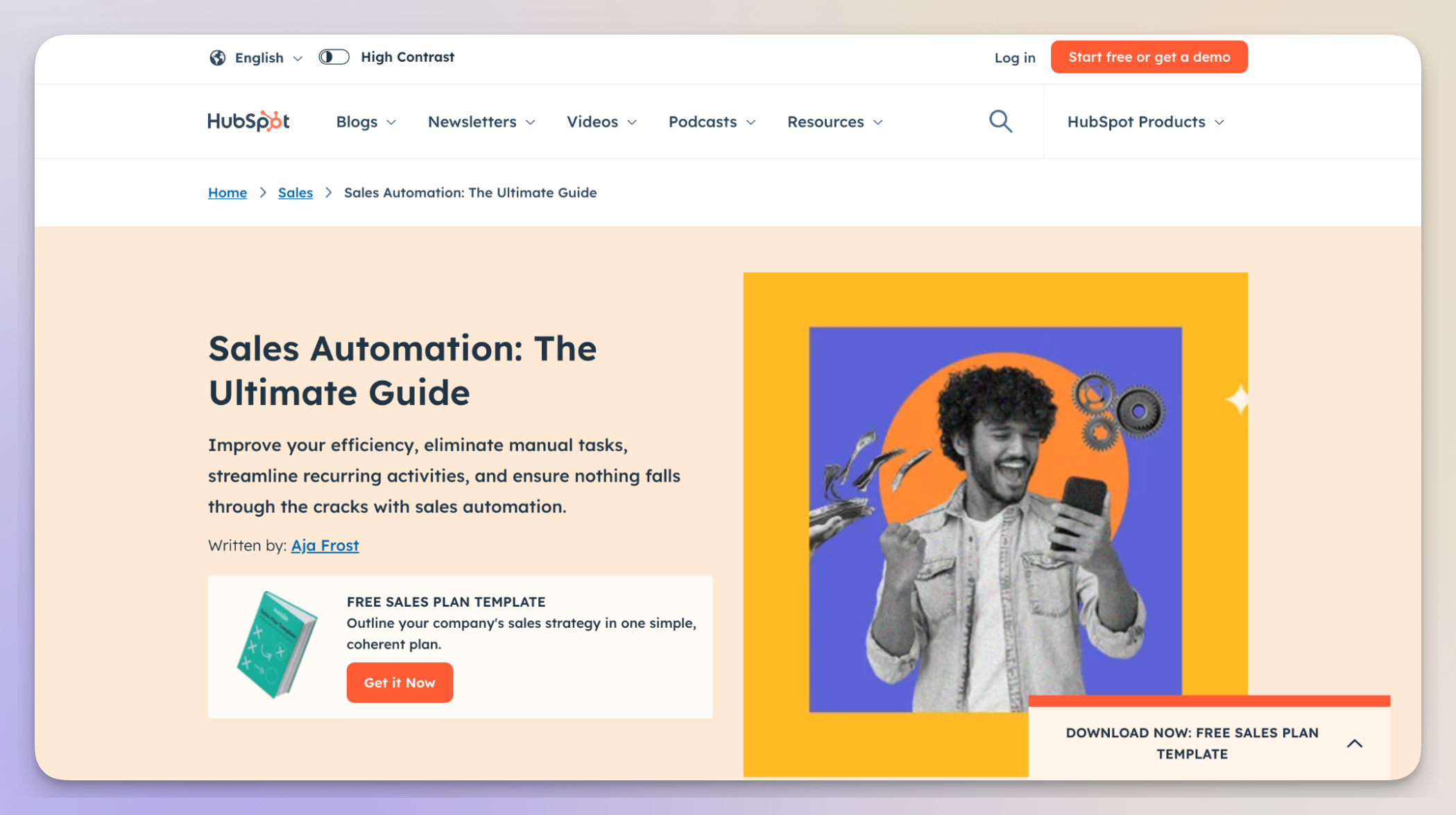
Use videos as background content
Not every frame of your video makes the final cut, but that doesn’t mean it’s useless for repurposing.
Bring your B-Roll footage back to use! B-roll footage, like behind-the-scenes clips, extra shots, and even bloopers can be repurposed into teasers, subtle ad backgrounds, or even standalone social media content.
Compile and expand
Not only can you reuse content from your one existing video into another, but also use multiple. Take the standout moments from your videos and compile them into a highlight Reel!
These are perfect for celebrating milestones, showcasing your best products, or creating end-of-year wrap-ups – it can show how much your business has done throughout the year in just a couple of seconds.
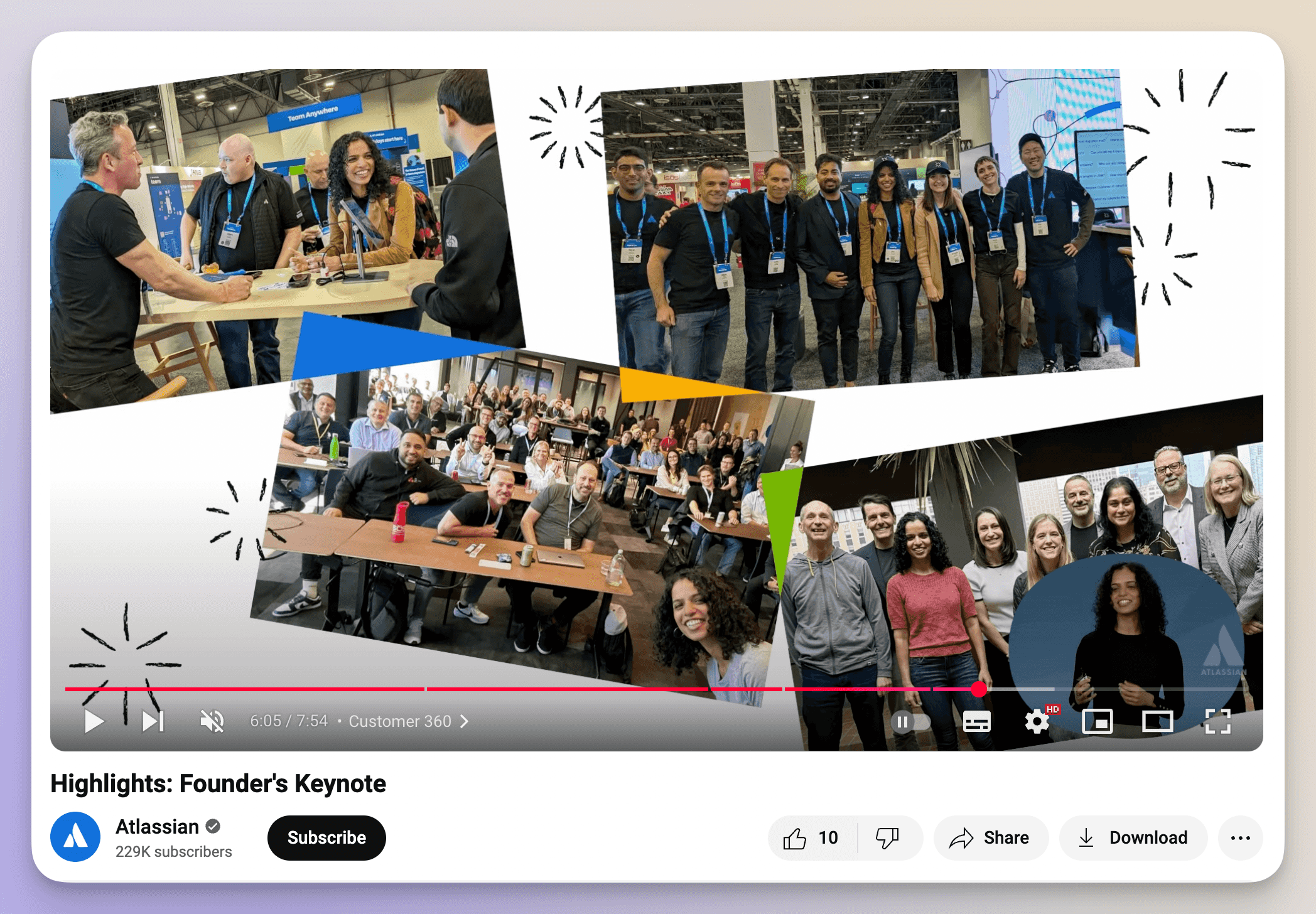
You can repurpose content from your event into a short video with its highlights, like Atlassain did.

Republish webinars or live streams as on-demand content
Webinars and live streams don’t have to end when the broadcast does. You can repurpose this video content and edit the recording into a video for your website, YouTube, or social channels.
Don’t forget to add captions for accessibility, timestamps for easy navigation, and on-screen graphics to emphasize key points. These elements make your repurposed content easier to digest.
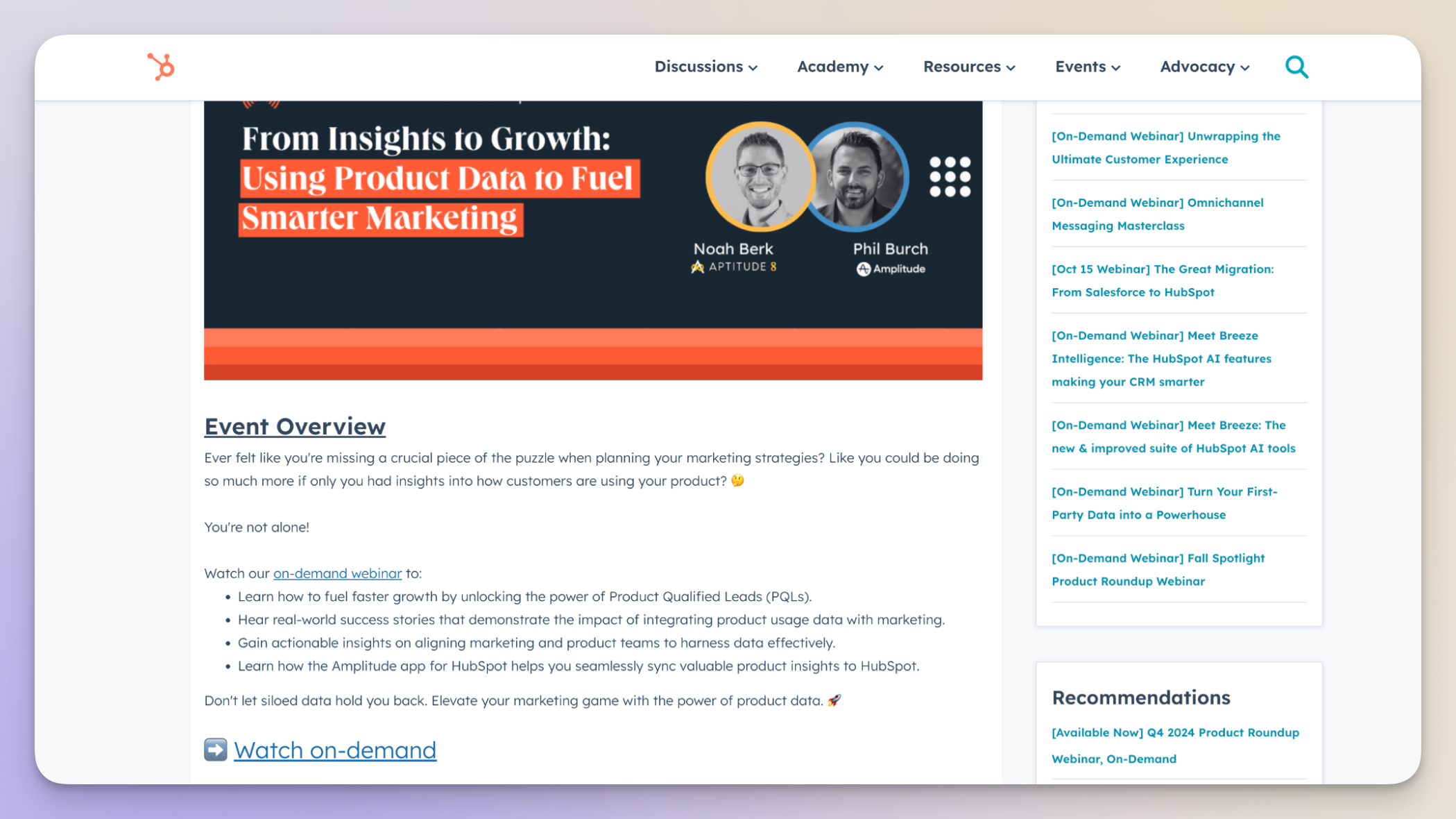
Hubspot has also repurposed content from their on-demand webinar to a series of Q&A articles.
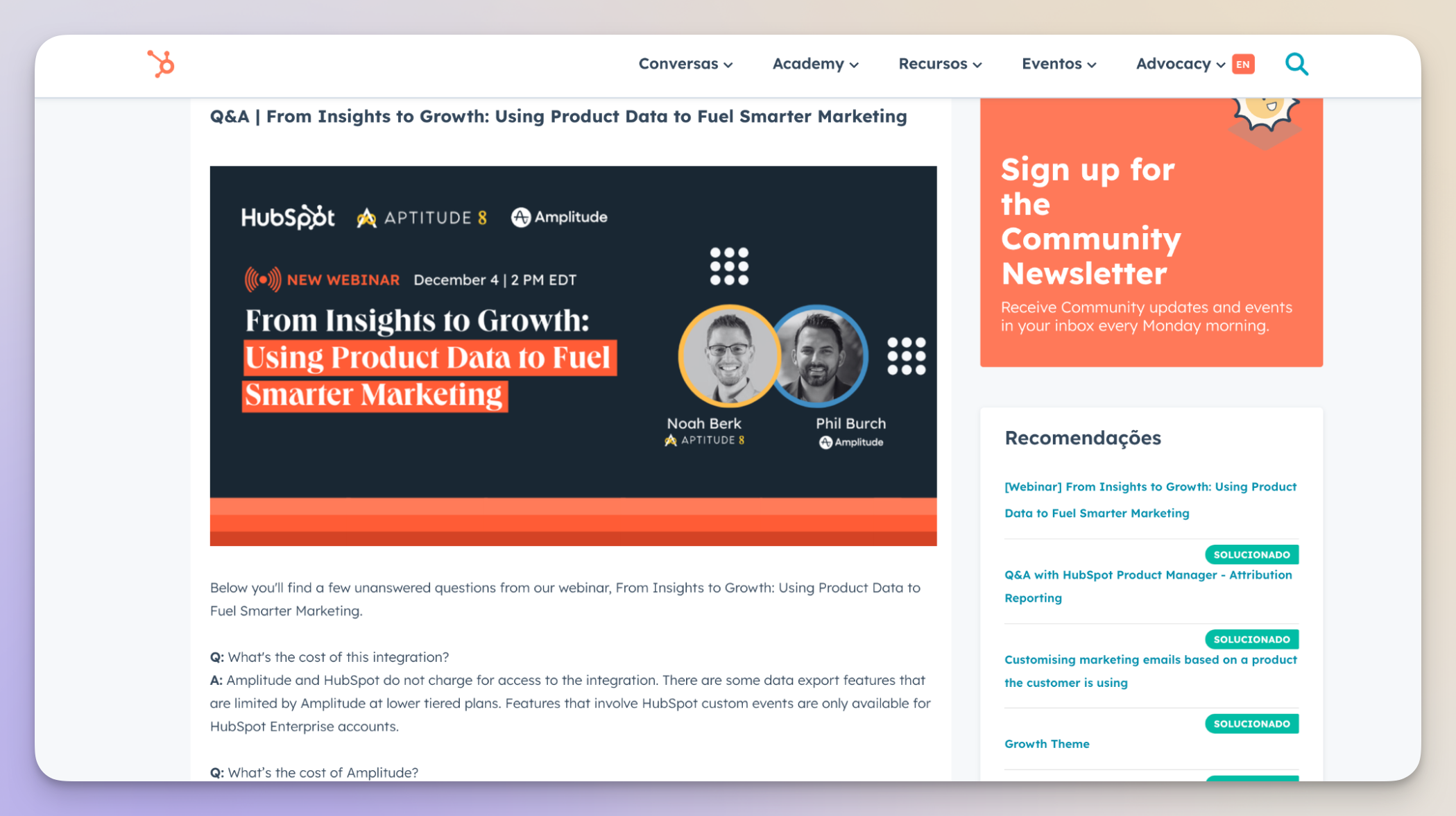
Transform videos into podcast episodes
Your video’s audio track can serve as a ready-made podcast episode – not exactly cross-posting because you’ll need to work on it a bit, but it’s way easier than creating a whole new podcast.
If you’ve hosted an interview, panel discussion, or tutorial, extract the audio, add an intro and outro, publish it for your podcast audience – and voilà! With this repurposed content, you can now reach audiences who prefer audio content on the go.
There are multiple platforms for you to upload your podcasts to, but Spotify must be the most commonly used one.
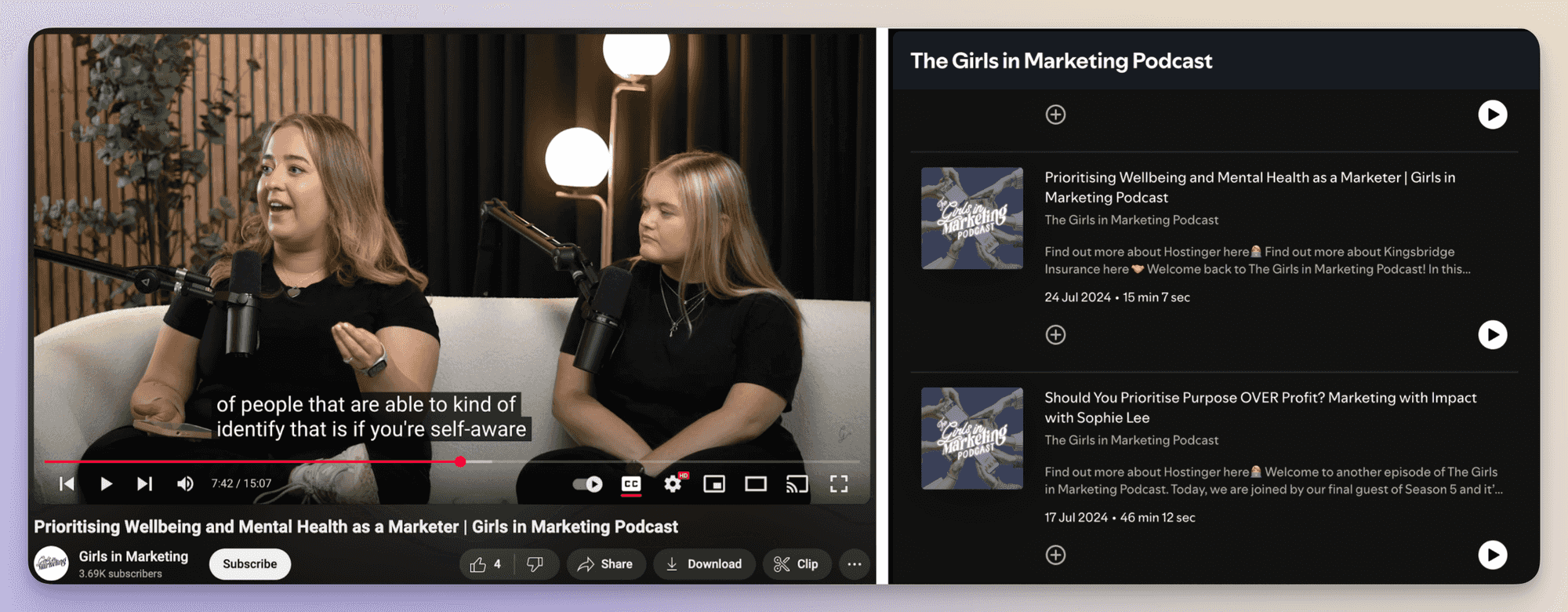
When you experiment with these methods and add them to your content repurposing strategy, you revitalize your video content and maximize its potential across a variety of platforms and formats.
#4. Repurpose white papers or eBooks
White papers and eBooks are always packed with valuable information, but, unless repurposed, their dense format might not appeal to every audience.
The reading is long, the language is usually technical, and you don’t just come across things like a white paper randomly – you have to be really dedicated to even look for one.
However, there are ways to repurpose them. If you break these down into smaller, more engaging pieces, you can extend their reach and make the content more accessible.
Create different blog posts
Each chapter or section of a white paper or an eBook can serve as the foundation and be repurposed into a standalone blog post.
In a lot of cases, you won’t even need to rewrite anything – expand a bit on specific points, add fresh examples, and off you go. This approach will both maximize the value of the original resource and provide steady content for your blog.
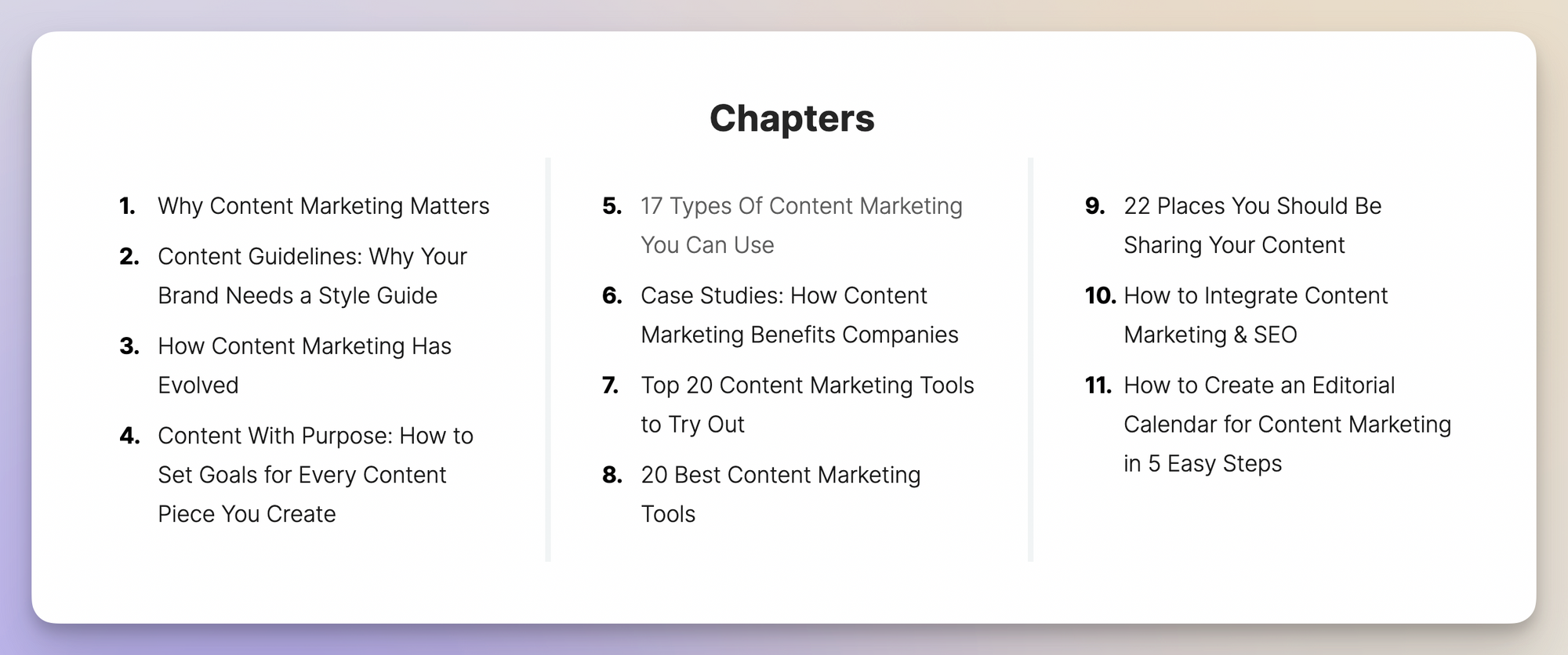
Here’s how Search Engine Journal started reusing existing content from their ebook: they repurposed their “17 Types of Content Marketing You Can Use” chapter into a whole blog section that had multiple articles describing what and how to use for your increased marketing performance.
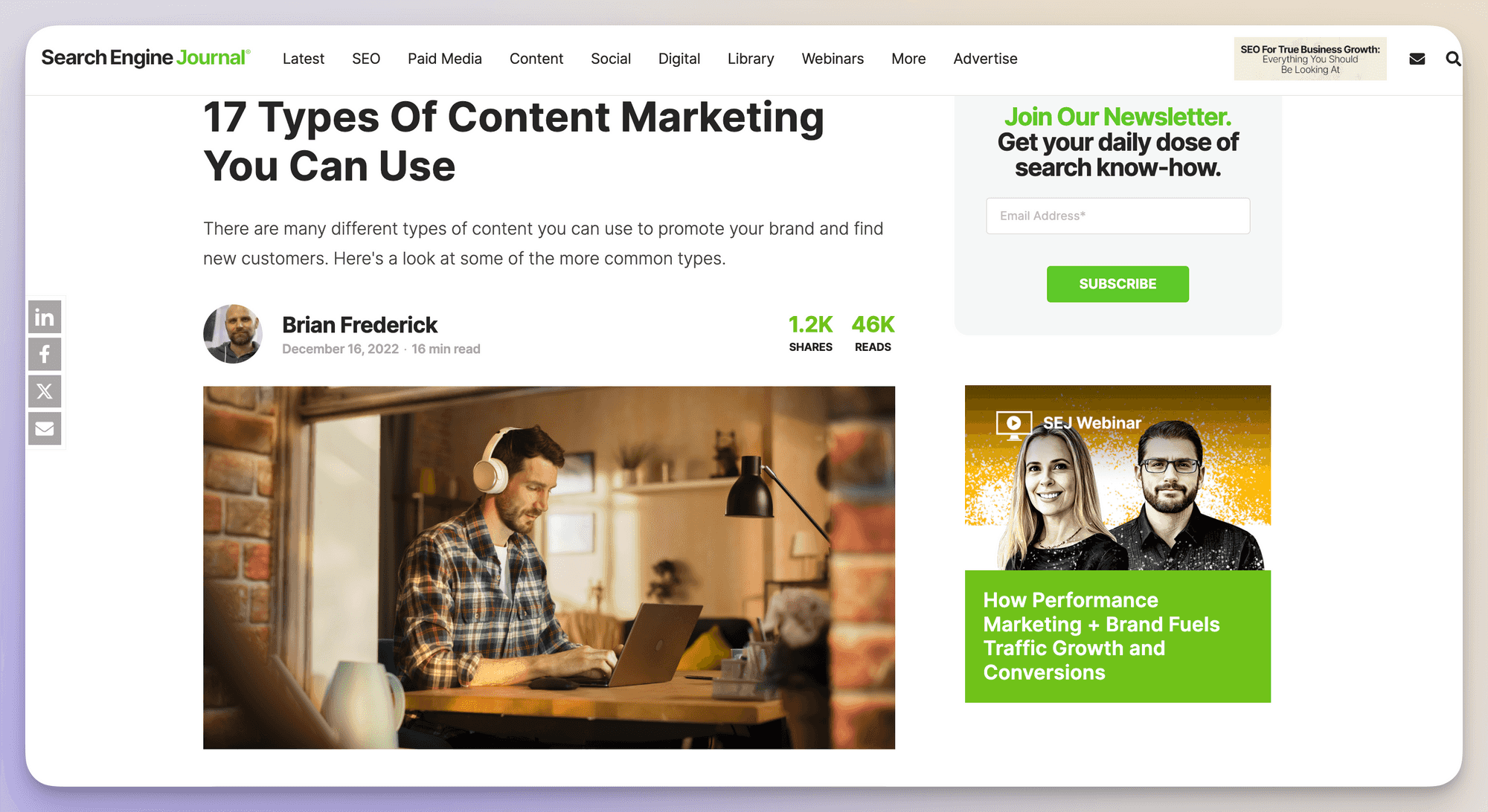
Summarize the key points into an infographic
We don’t forget about the visual learners here, too. Try repurposing the main takeaways into a visually appealing infographic, as they are highly shareable and can be used practically everywhere – on social media, in presentations, or as a downloadable resource on your website.
When reusing existing content of this kind, focus on putting complex data or processes into simple, easy-to-digest visuals.
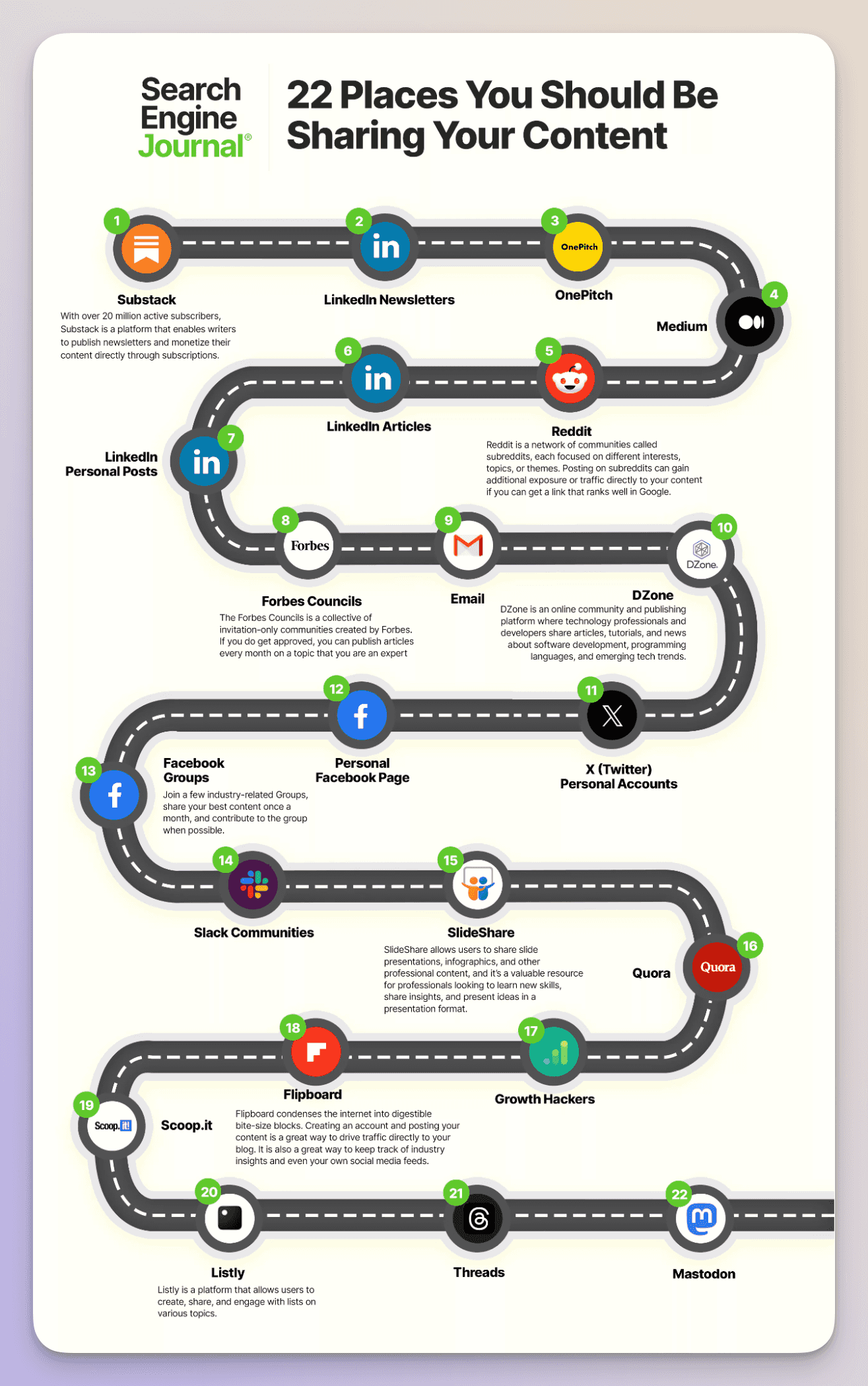
Start an email series based on the main chapters
Instead of delivering all the information in one go (if it’s a whole book, it’s a lot to handle), repurpose content from your ebook into an email series.
Each email can focus on one chapter, section, or key theme to build anticipation.
You could also end each email with a call-to-action to download the full resource, as some subscribers will be curious enough to read it all.
Turn key insights into social media posts
Wonder how to repurpose content for social media even from an ebook? Your longer pieces must have a lot of compelling statistics, quotes, and how-to’s so we can adapt them into bite-sized social media posts.
Visuals are everything, so why not add these or carousel formats to draw more attention? A key finding from an eBook can be repurposed into an Instagram post, and a short curious quote could work well on LinkedIn.
Transform them into webinars
Hosting a webinar where you dive deeper into the ideas presented in the white paper or eBook is among the greatest examples of repurposing.
Use slides or other visuals and real-world examples to make the content more dynamic and interactive, and allow your audience to see the human face behind the writing.
This format allows for live audience engagement and can generate new insights through Q&A sessions.
By repurposing content from white papers or eBooks, you can transform your resources into versatile content.
It extends the lifespan of your original work and ensures that the value comes in all shapes, be that reading, listening, or watching.
#5. Repurpose podcast episodes
Podcasts are rich in stories, insights, and expert opinions, but not everyone consumes content in audio form.
Repurposing existing content from podcast episodes allows you to deliver the same information to different audiences in ways that better fit their preferences.
Repurpose content from a podcast into a video
This repurposing idea requires some extra work, but you don’t have to generate new content from scratch.
Turn your audio episode into a video by adding subtitles, visuals, or even animation to match the discussion. If the podcast was recorded with a guest on camera, it helps you a lot, as you could repurpose the footage to create a video podcast for YouTube, Instagram or LinkedIn.
Monday.com did a short teaser of their podcast on Instagram and uploaded the whole episode on Spofity.
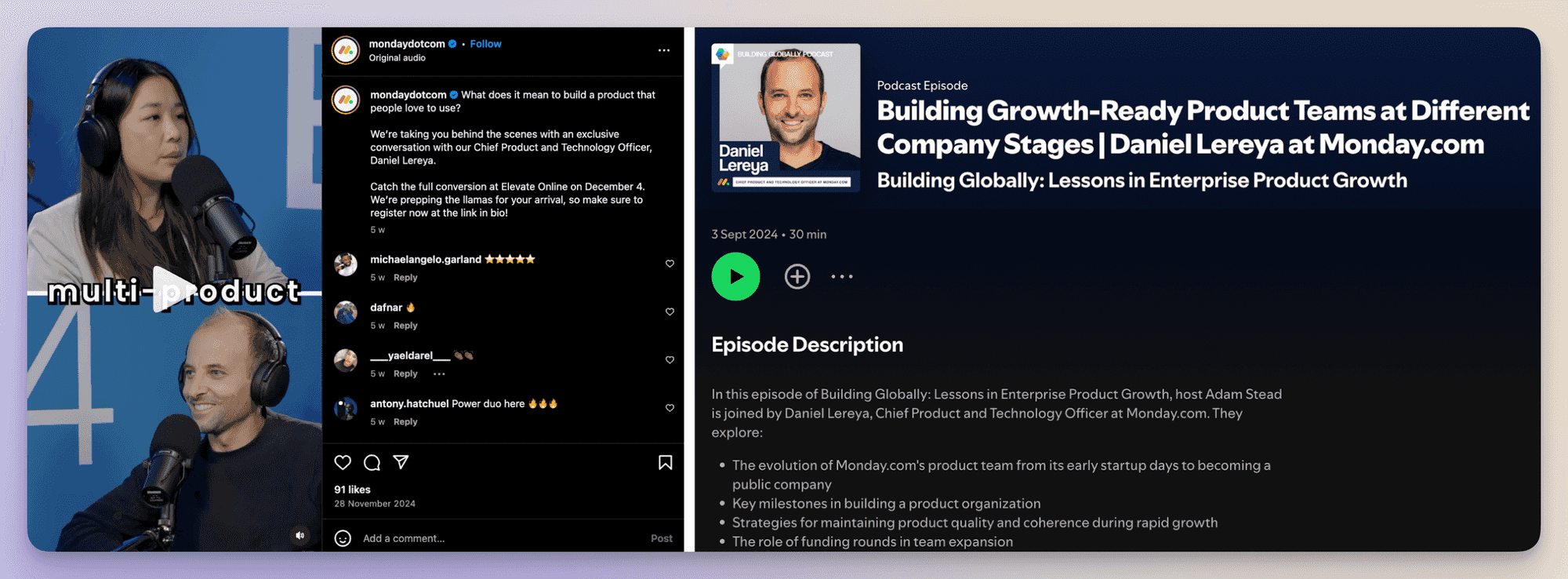
Transform podcast into a themed series
The idea behind this content repurposing it is similar to creating Spotify playlists; you should group related podcast episodes into a cohesive series.
For instance, if you’ve covered several topics about social media marketing, reuse content to combine them into a “Social Media Success” series. This approach gives your audience an easy way to explore interconnected topics.
Compile the insights into a blog post
Extracting insights from podcast episodes is an excellent way of content repurposing to reach audiences who prefer reading over listening, and it allows you to expand on the episode's key ideas.
You can also include a link to the podcast itself within the blog post – this encourages readers who find the blog post valuable to listen to the full episode to see what else it has to offer.
Create audiograms
Highlight the most impactful moments from your podcast by creating audiograms. That way, you can repurpose content for social media from your podcasts – pair a short audio snippet with visuals, captions, and waveforms for Instagram, Twitter, or TikTok.
Audiograms are your quick way to hook potential listeners and (yet again) drive traffic to your full episodes.
#6. Repurpose webinars or live events
Once your live session ends, there's no need for it to go to waste. You want to repurpose your content to keep the conversation going, and make sure your audience continues benefiting from it, as live events can more often than not be evergreen content.
Share as video-on-demand
Instead of letting the recording sit unused, why not reuse content to make it available for on-demand viewing? It allows people to access the material whenever they want, whether they missed the event or want to revisit the content.
This repurposing method is closer to cross-posting – all you need to do is upload it to platforms like YouTube or your website, so anyone who couldn’t make it there and then can still catch up on the discussion.
Break videos into short clips
Not everything in your webinar or live event needs to be consumed all at once, especially for those struggling to stay focused, so we’ll be repurposing content for social media using short clips.
Use the most exciting moments, key takeaways, or discussions, and share them as highlights on any social media (make sure to adjust it accordingly).
Create a blog post or guide
Think of your live event as a starting point for longer-form content. A smart solution to repurpose video content is to write multiple blog posts that summarize the main points, dive deeper into certain topics, or expand on questions asked during the session.
It's a perfect way to give your audience a resource they can refer back to. They can as well save and share topics that are most relevant to them.
Create a podcast
We can repurpose anything and everything to a podcast. If your webinar or live event was filled with great conversation, you can share the audio with your audience in podcast form.
One of the best repurposing example is Dorien’s Strategy Talks live show on LinkedIn – turned into a series of podcasts, so listeners can enjoy it at their convenience. It's perfect for those who prefer audio content while on the go.

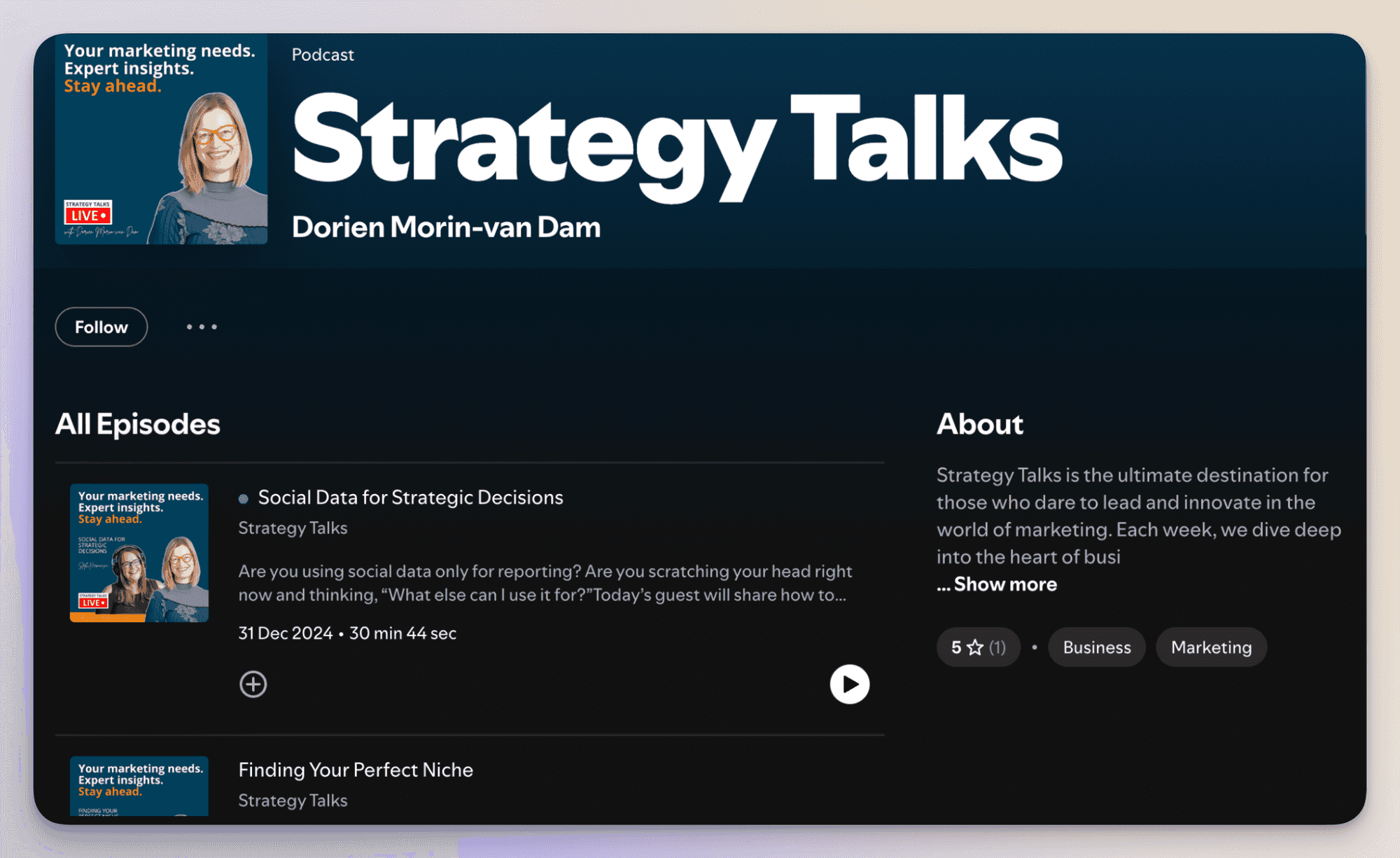
#7. Repurpose research or reports
Without proper content repurposing, the information in your reports or other kinds of research can just get overlooked – a lot of people just won’t read this long and often complex of a thing, even if they are curious about the topic.
By reusing existing content from your research and trying it for different formats, you can make your research actually impactful for a broader audience.
Summarize the findings in a video
Your niche would love a full report whatever format you post it in, but not ensure it gets the full visibility potential deserved?
Transform the essential points from your report into a short video and post your repurposed content across the social media platforms of your choice; this format makes complex data more accessible, particularly for those who tend to consume content visually, or just getting started with the topic you’ve done your big research on.
Your content can and should be multipurpose and of different levels of complexity, like here – this video has been repurposed to summarize key takeaways from the TikTok Benchmarks report. In the description, it also suggests downloading a full report to dive into the stats.
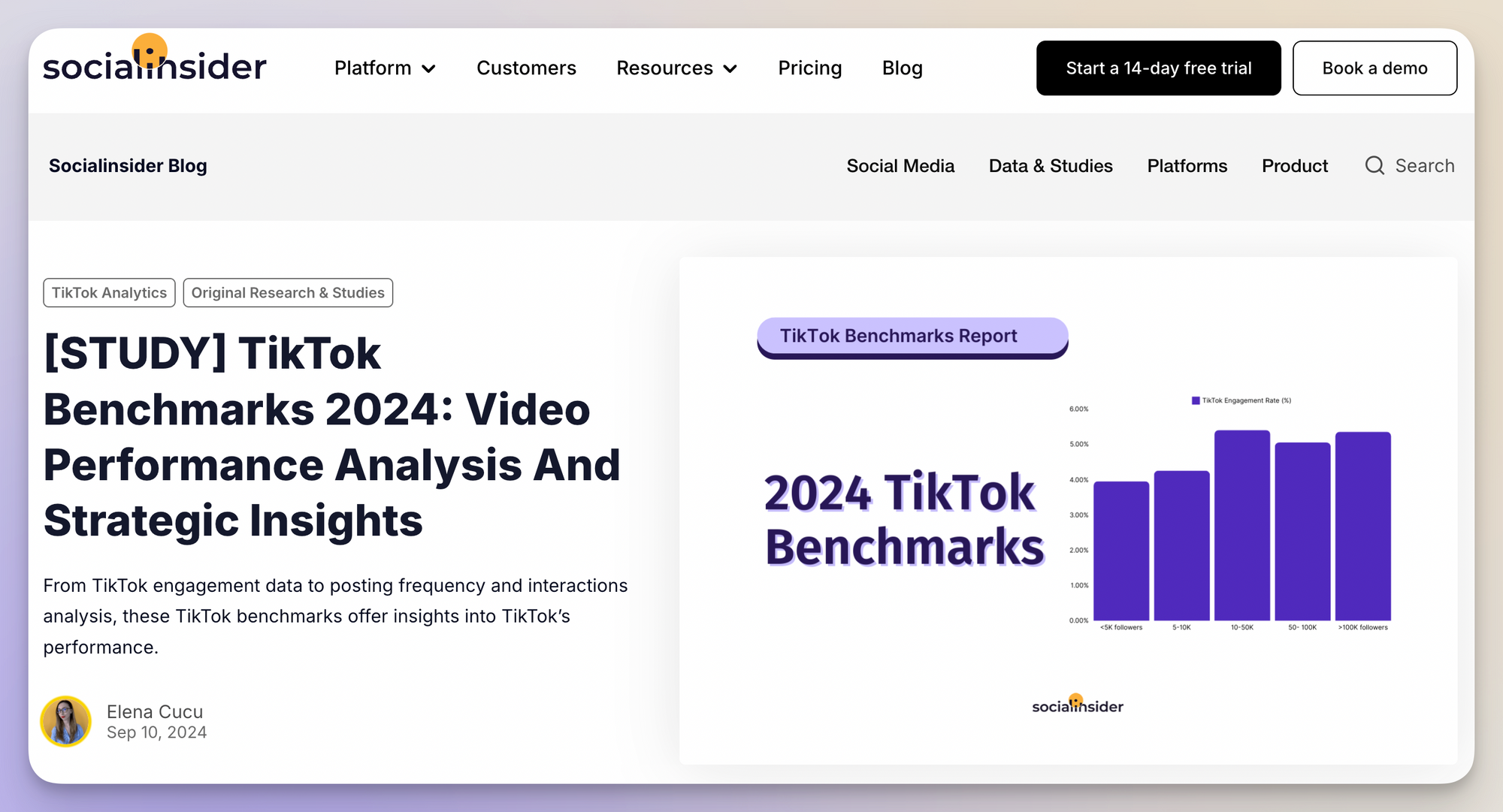
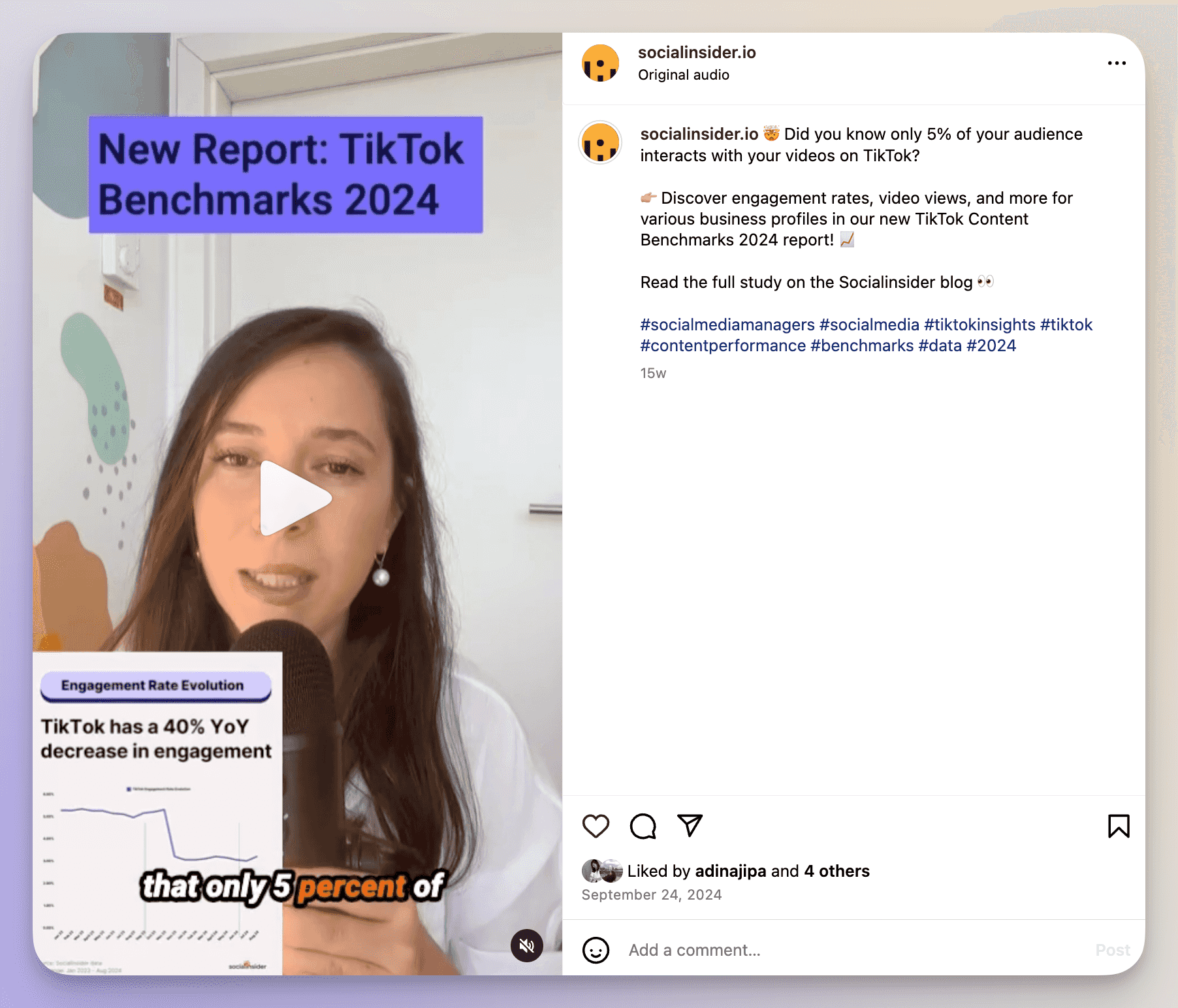
Create social media snippets
Another way to repurpose content is to highlight interesting facts or data points from your research and share them as separate posts.
These snippets can grab your audience’s attention and may pique their curiosity about the full report (don’t forget to add a link to your findings).
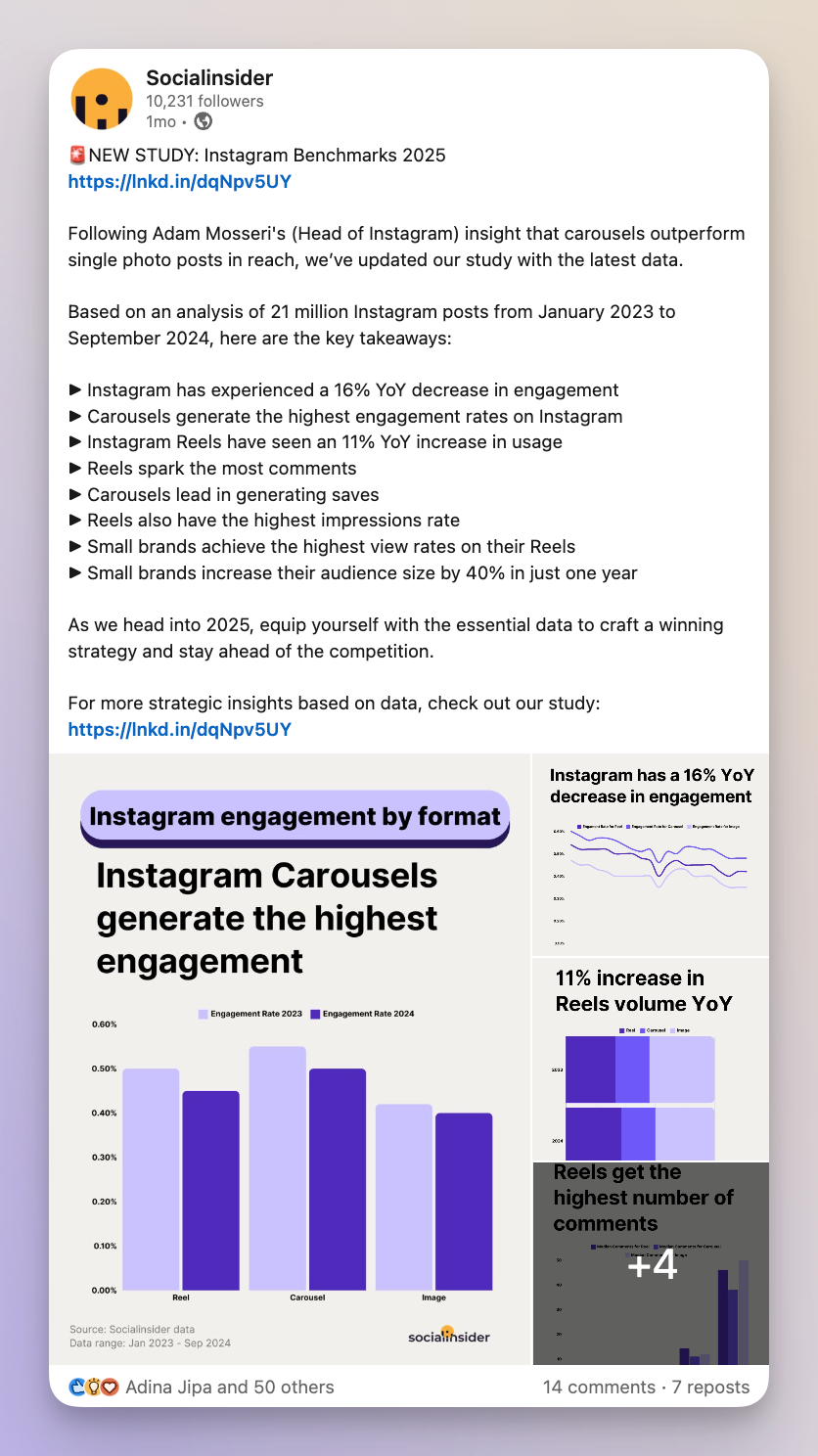
Develop a webinar or workshop
Your audience loves learning in all ways possible, so you can reuse content from your research as the foundation for a webinar or workshop.
By presenting the findings in a more interactive format, you give people the opportunity to ask questions and learn how the data applies to them from a real expert. It’s best if you record it and repurpose your video content again later.
Cover the key insights in a newsletter
Not everyone can go through a full report, but a well-written newsletter summary can spark curiosity and encourage your audience to explore more.
Reusing existing content from your report in a newsletter is your opportunity to highlight your expertise and give your readers something valuable they can quickly apply.
For example, repurposing your research into teasing insights about trends in B2B marketing or performance benchmarks for social media campaigns can capture attention and lead readers to the full content.
You just have to condense the most important points of your report into a brief, easy-to-digest newsletter.
Make a visually appealing data presentation
Proper infographics work best to visually represent your report’s data.
Data presentation is great for repurposing and making complex information easier to understand and easier to share across social media and blogs.
You can reuse content from this presentation to make an Instagram carousel or use it in your blog post.
Be a guest on other podcasts to discuss your report findings
People love podcasts because they can hear experts’ discussions live and unpolished, so this too should be in your content repurposing strategy.
Take your research on the road by discussing it on podcasts!
Our CMO, Adina, shared insights from the Instagram Benchmarks report 2024 on a podcast – not only did it provide more context around our findings, but also was great for the brand identity.
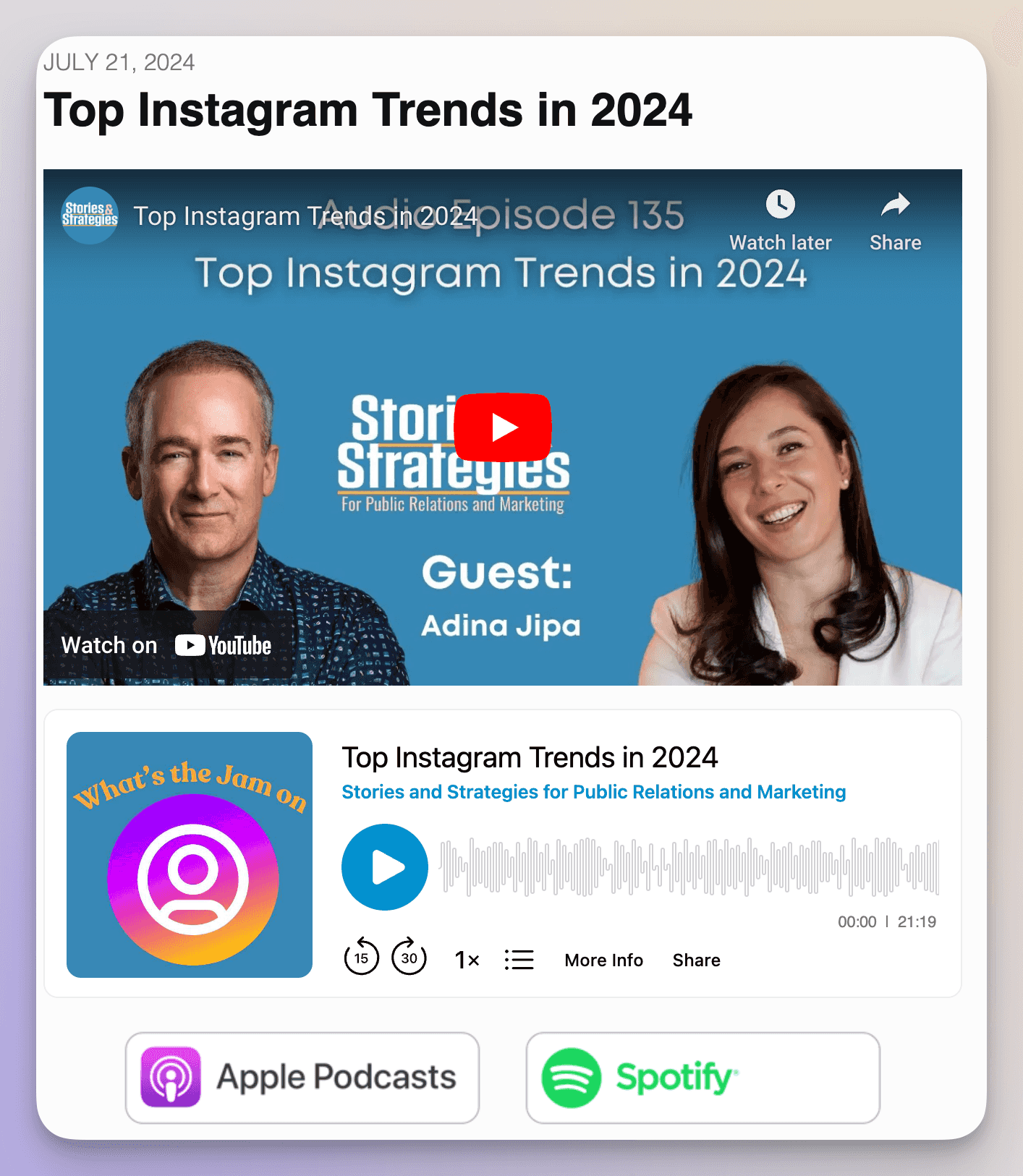
#8. Repurpose customer support content
Customer support interactions are more than just one-on-one problem-solving – they can be a window into the real challenges and needs of your audience.
By repurposing these exchanges (and saving time for your support team), you can create content that resonates with your customers on a personalized level.
Use user feedback as a source of inspiration for blog content
If you notice recurring questions or pain points, here’s how to repurpose content for social media – you can answer these questions in detailed blog posts or step-by-step guides.
Not only do these articles help your audience solve their issues independently, but they also boost your brand’s authority.
You may argue that it’s not exactly reusing existing content, but it should be in your pool of ideas for sure.
Create tutorial videos
A lot of problems are easier to show than explain. Repurpose your FAQs or common support requests into simple video tutorials that walk users through the solution visually.
Tutorials often serve as helpful resources for onboarding, troubleshooting, or product demonstrations and can be repurposed to be posted on multiple platforms.
Post tips on social media
Share quick, actionable advice based on your customer feedback – it can be a video, a post, or even a podcast, depending on the social media platform and its audience.
Louise Linehan provides us with examples of repurposing – the Ahrefs Content Manager often turns common support inquiries into SEO tips and shares them on LinkedIn to engage a wider audience, and it works!

Final thoughts
Let your social media thrive without reinventing the wheel – you have to put more effort into creating your content repurposing workflow.
When you feel that you ran out of content units and ideas for the new ones, you need to reevaluate what you have already created yesterday or even years ago and reuse content you have.
Even if you are just about to start working on a new social media platform, you don’t have to spend months on doing that from scratch, when you’re half-way there with your previous marketing efforts.
There are two approaches you have to combine when repurposing content – data-driven analysis and a pinch of experimenting, and Socialinsider is of help with both.
FAQs on content repurposing
How is repurposing content different from cross-posting and reposting content?
Repurposing content is taking what you’ve already created and reworking it to fit different formats or audiences. You can repurpose blog content into an infographic, a podcast, or a social media post. It’s more intentional and tailored than cross-posting.
Cross-posting is simply sharing the same content on multiple platforms without making any changes. Reposting, on the other hand, is when you reshare older content as-is to give it a second life or reach new viewers. Overall, cross-posting and reposting are different from repurposing content repurposing strategies, but can be included into one.
When should you think about repurposing content?
Reusing existing content is a good idea when you have content units that’s performed really well – it’s a chance to squeeze more value out of something that’s already proven successful.
Evergreen topics are also perfect for content repurposing; they stay relevant over time, so you can keep finding new ways to present them.
It’s also helpful when you’re short on time or resources, as repurposing is a lot quicker than creating something new from scratch.
Another great time to consider repurposing is when you’re trying to expand your reach, especially if you want to adapt content for platforms where you’re still building a presence.
How do you prioritize which content you should repurpose?
The best place to start is with content that’s already working well.
When you figure that something is getting a lot of social media engagement, traffic, or shares, it’s worth repurposing.
You’ll also want to think about what repurposed content can align with your current goals – raising awareness about a product, supporting a campaign, or something else entirely.
Timeliness is another factor; if you’ve got content that ties into a current trend or an upcoming event, it should be high on your list.
Last but not least, focus on content that’s easy to adapt and repurpose. Long-form pieces, for instance, can be broken down into smaller snippets, like quotes, tips, or visuals for social media – it doesn’t require a lot of extra work.
How do you make content repurposing a seamless part of your workflow?
If you want to have a content repurposing workflow, you have to plan for it upfront. When you’re creating content, think about how it could be broken down or reworked later.
Say, you work on a blog post; this means it could be turned into social media graphics or a short video.
Using templates for things like posts or visuals can save a ton of time, too, and productivity tools make the process easier by streamlining design and scheduling.
It also helps to have clear roles within your team – one person may focus on repurposing visuals while someone else tweaks the copy.
Once this all is set, you need to keep an eye on how your repurposed content performs, so you can fine-tune the process and make it even smoother over time – content repurposing with all its stages should become a habit.
Should you repurpose your content for every channel?
Not always. When choosing repurposing content strategies, it’s best to focus on channels where your audience is most active and where the content makes sense (simple as that).
Your detailed blog post might work great as a LinkedIn article or an email newsletter, but it might not be the right fit for TikTok.
Very important note – you shouldn’t necessarily be everywhere. Before repurposing content or cross-posting, do your research to figure where your audience spends most of the time.
By tailoring your repurposed content for the right places, you’ll have a much bigger impact without spreading yourself too thin.









